China is home to a diverse range of bird species, many of which are endemic and found nowhere else in the world. These birds are a source of national pride for the Chinese and have been celebrated in their culture for centuries.
China’s bird species come in a wide range of sizes and colours, from the smallest hummingbirds to the majestic cranes and eagles. The country is also home to a number of threatened and endangered species, such as the Chinese Crested Tern and the Yellow-breasted Bunting.
In this article, we will explore the different types of birds that can be found in China and the unique habitats they inhabit.
1. Cranes
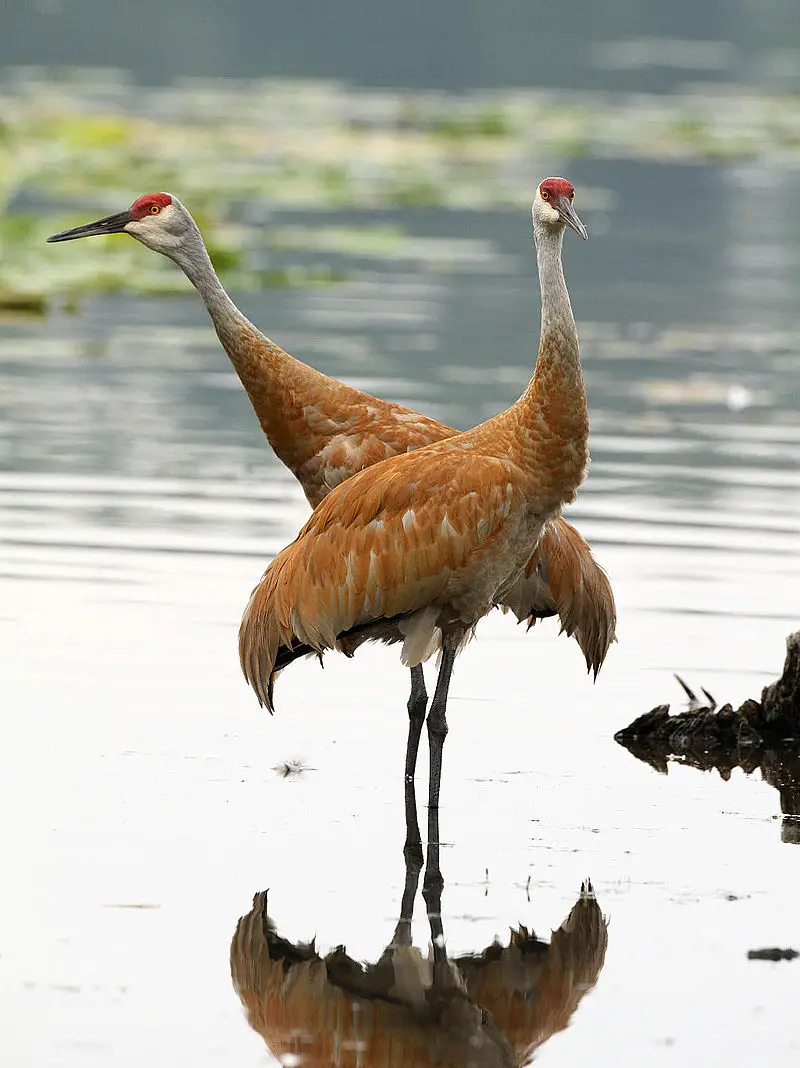
Cranes are majestic birds that can be found on most continents except Antarctica and South America. They are in the Gruiformes group of birds and belong to the family Gruidae.
Cranes have long legs, and long necks, and stand out from other birds due to their impressive size.
When they fly, they do so with their necks outstretched rather than pulled back like many other similar-looking species like herons.
There are fifteen species of cranes that are divided into three genera: Antigone, Balearica, and Grus.
They are a sight to behold and are sure to leave a lasting impression on anyone lucky enough to observe them in their natural habitat.
Scientific classification:
| Kingdom | Animalia |
| Phylum | Chordata |
| Class | Aves |
| Order | Gruiformes |
| Superfamily | Gruoidea |
| Family | GruidaeVigors, 1825 |
Also Featured In: Flocks Birds around Us, African Birds
2. Phasianidae
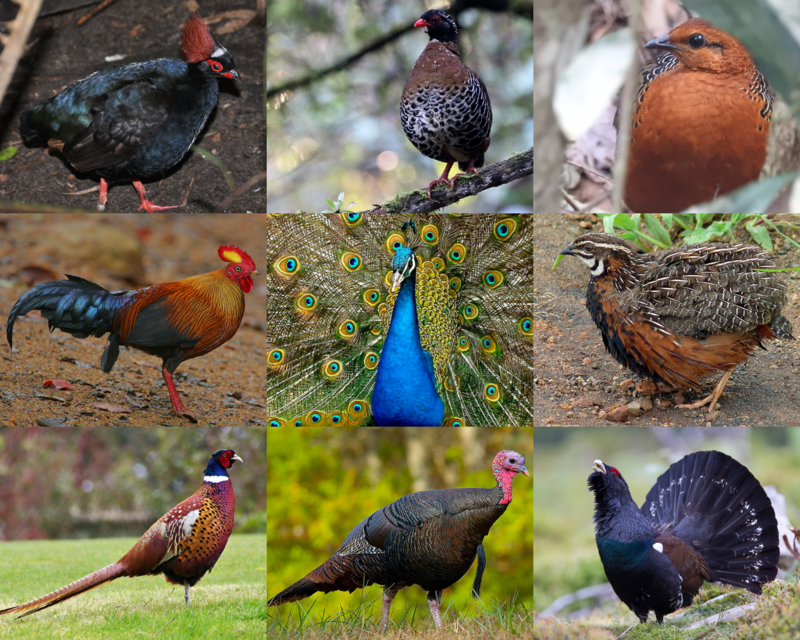
The Phasianidae family of birds is one that contains many popular gamebirds, with a total of 185 species divided across 54 genera.
These heavy ground-living birds include pheasants, partridges, junglefowl, chickens, and turkeys among others like Old World quail and peafowl.
This large family was formerly split into two subfamilies known as the Phasianinae and Perdicinae but this classification has since been changed to reflect more current scientific findings on them.
All these different types of birds have certain things in common such as their strong legs for scratching through leaves or soil looking for food items including insects, seeds, and other vegetation which makes up most of their diet.
They also all tend to be quite colorful in order to attract mates during breeding season when males will often display vibrant feathers or do dances around females in an attempt at courtship ritual displays.
The majority are monogamous creatures too although some may form short-term pair bonds before going off alone again once mating has taken place – either way.
There tends to be very little parental care given by adults after eggs have hatched so chicks need to fend for themselves right away.
Scientific classification:
| Kingdom | Animalia |
| Phylum | Chordata |
| Class | Aves |
| Order | Galliformes |
| Superfamily | Phasianoidea |
| Family | Phasianidae Horsfield, 1821 |
Also Featured In: Turkey Birds You Should Know, Italian Birds You Should Know
3. Mandarin Duck
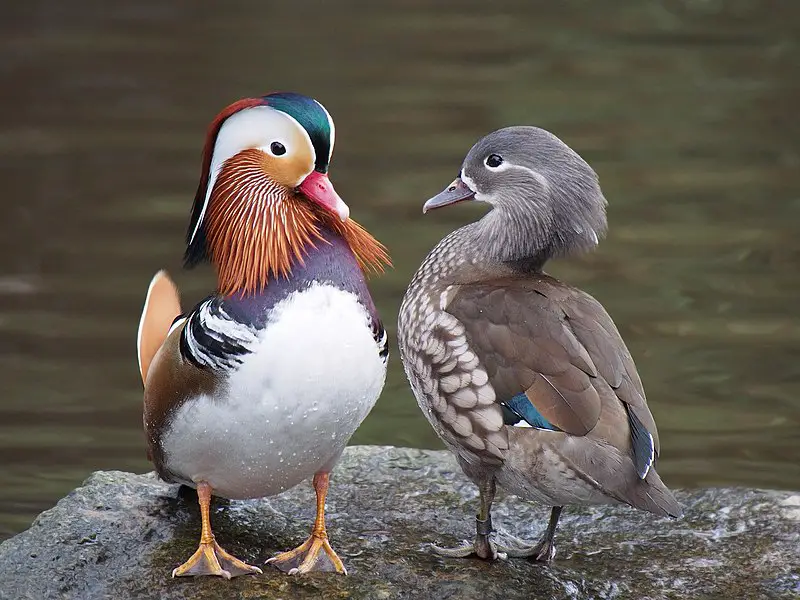
The Mandarin Duck is a stunningly beautiful bird native to the East Palearctic region. It has striking plumage, with the males featuring brightly-colored feathers of purple, blue, and green on their head, back, and wings as well as an orange bill.
The females are duller in color but still have attractive markings. They measure between 16 and 19 inches long with a wing span of 26 to 30 inches wide.
These ducks prefer freshwater habitats like lakes or rivers but will also forage for food in nearby grasslands or wooded areas if needed.
During the breeding season, they form pairs that nest either high up in trees near water sources or more commonly next to reeds close by ponds where they lay around 10 eggs at once.
After hatching their young remain together until autumn when they begin migrating southwards towards wintering grounds further away from their northern homes.
However, some individuals can stay put depending on local climate conditions and availability of resources such as food supply during colder months of the year before returning north.
They again come springtime when temperatures rise again allowing them easier access to aquatic vegetation that sustains them throughout the summer months ahead then repeat this cycle each year thereafter.
Scientific classification:
| Kingdom | Animalia |
| Phylum | Chordata |
| Class | Aves |
| Order | Anseriformes |
| Family | Anatidae |
| Genus | Aix |
| Species | A. galericulata |
Also Featured In: Birds that are Used in Feng Shui, Birds of Symbolism
4. Sandpiper

The Sandpiper is a small to medium-sized shorebird that inhabits coastal and inland habitats. It has long, slender legs and a bill with an overall brownish or gray plumage.
Its unique feature is its short wings which are adapted for wading in shallow water. The bird feeds mainly on insects, crustaceans, mollusks, and other invertebrates found in the mud of wetland areas such as marshes, estuaries, and lagoons.
During the breeding season it can be seen migrating from one area to another looking for suitable nesting sites near bodies of water where they lay their eggs in nests made of vegetation material lined with pebbles or shells.
Their diet consists mostly of aquatic organisms like shrimp larvae but also includes some plant matter such as seeds when available during winter months.
When food becomes scarce due to cold temperatures preventing them from finding adequate sources elsewhere.
5. Cotton Pygmy Goose

The Cotton Pygmy Goose is a small perching duck found throughout Asia and Southeast Asia, extending south to Queensland.
It stands out among waterfowl as one of the smallest in the world, with a quill-white coloration that helps it blend into its environment.
They often live alone or in pairs but form larger groups when looking for food near bodies of water with plenty of aquatic vegetation.
These birds are omnivorous, feeding on plants like grasses and seeds alongside insects such as beetles and termites.
Their diet also includes fish eggs and larvae from time to time. The cotton pygmies’ size makes them an easy target for predators so they use their agility to quickly escape danger whenever possible.
Scientific classification:
| Kingdom | Animalia |
| Phylum | Chordata |
| Class | Aves |
| Order | Anseriformes |
| Family | Anatidae |
| Genus | Nettapus |
| Species | N. coromandelianus |
Also Featured In: Common Birds in Kerala, Common Birds that Live in Odisha
6. Baer’s Pochard
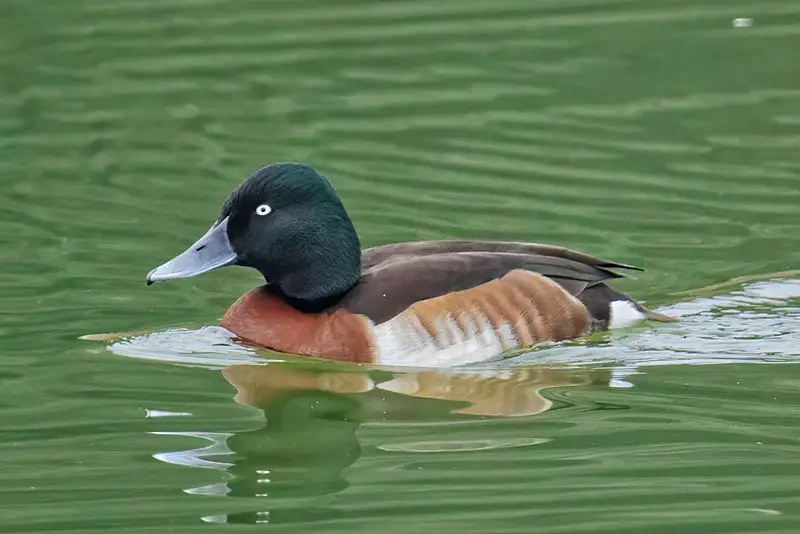
Baer’s pochard is a diving duck endemic to the eastern Asian region. It has an unmistakable black head and neck with green gloss, making it distinct from other species of ducks in the area.
This bird is mostly found in North and Central China but also migrates during winter months to southern China, Vietnam, Japan, and India as well as formerly bred in southeast Russia and Northeast China.
With its monotypic status, there are no subspecies of Baer’s pochard that have been identified yet by ornithologists.
The holotype for this specie was collected near the middle Amur River many years ago prior to its current distribution range being established today.
Its unique appearance makes it easily recognizable among other types of waterfowl inhabiting Asia bringing joy to those who spot them amongst their natural habitats.
Scientific classification:
| Kingdom | Animalia |
| Phylum | Chordata |
| Class | Aves |
| Order | Anseriformes |
| Family | Anatidae |
| Genus | Aythya |
| Species | A. baeri |
7. Gulls
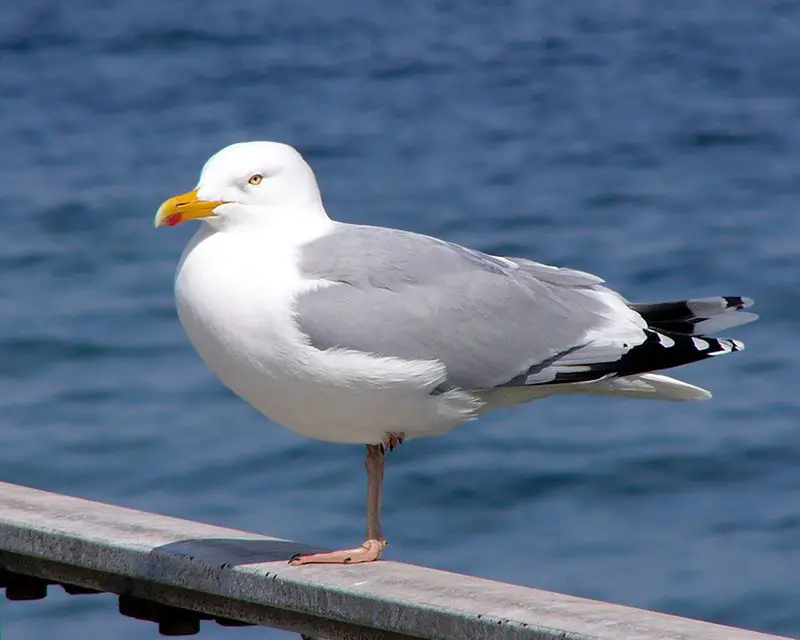
Gulls are a type of seabird in the family Laridae found worldwide. They are highly adaptable, often seen soaring above shorelines or near bodies of water.
Gulls have strong wings and long bills and vary greatly in size, colouration and behaviour from one species to another.
Some gull species feed on fish while others scavenge for food such as insects, small mammals or discarded human refuse.
Despite their different dietary habits they all share common traits including webbed feet which enable them to swim gracefully through the water after prey items like crabs or molluscs.
Gulls generally nest close to the shoreline where there is an abundance of available food sources making them excellent hunters that can live comfortably both on land and at sea.
Scientific classification:
| Kingdom | Animalia |
| Phylum | Chordata |
| Class | Aves |
| Order | Charadriiformes |
| Suborder | Lari |
| Family | Laridae Rafinesque, 1815 |
Also Featured In: Birds You’ll Find in the Sea, Ukrainian Birds You Should Know
8. Sandgrouse
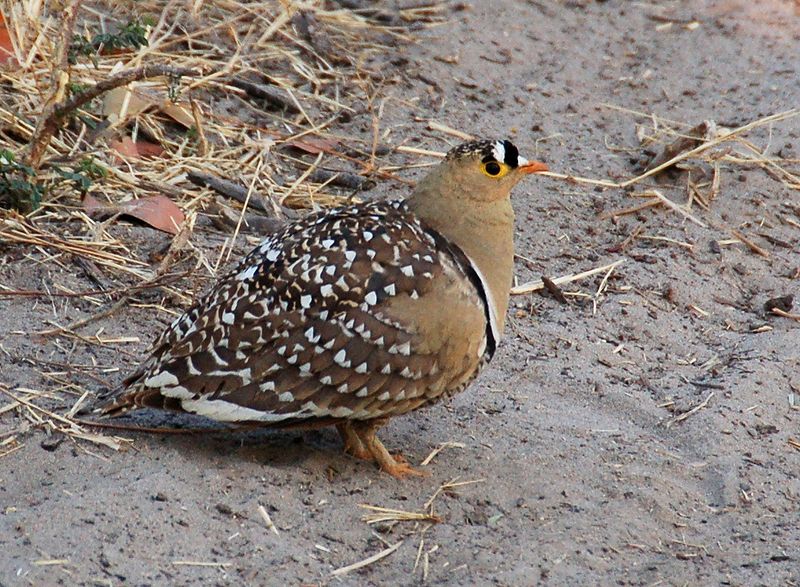
Sandgrouse is birds of the order Pterocliformes, found mainly in Africa and Asia. There are sixteen species belonging to two genera – Syrrhaptes from central Asia and Pterocles from Africa and other Asian countries.
They inhabit treeless areas such as deserts, steppes, scrubland, or savannas and tend to be ground-dwelling birds that feed on seeds.
Sandgrouse has adapted special features for survival in their harsh environment.
They possess well-developed feet with four toes used for walking over hot sand while keeping their body temperature cool at all times by regulating heat loss through their legs.
Their feathers also act like a sponge helping them absorb water before flying long distances back home where they then expel it using specialized glandular secretions located near the wings so that chicks can drink directly from an adult’s breast plumage.
Scientific classification:
| Kingdom | Animalia |
| Phylum | Chordata |
| Class | Aves |
| Clade | Columbimorphae |
| Order | Pterocliformes Huxley, 1868 |
| Family | Pteroclidae Bonaparte, 1831 |
Also Featured In: Common Algerian Birds , Birds That Live in Iraq
9. Painted-Snipe
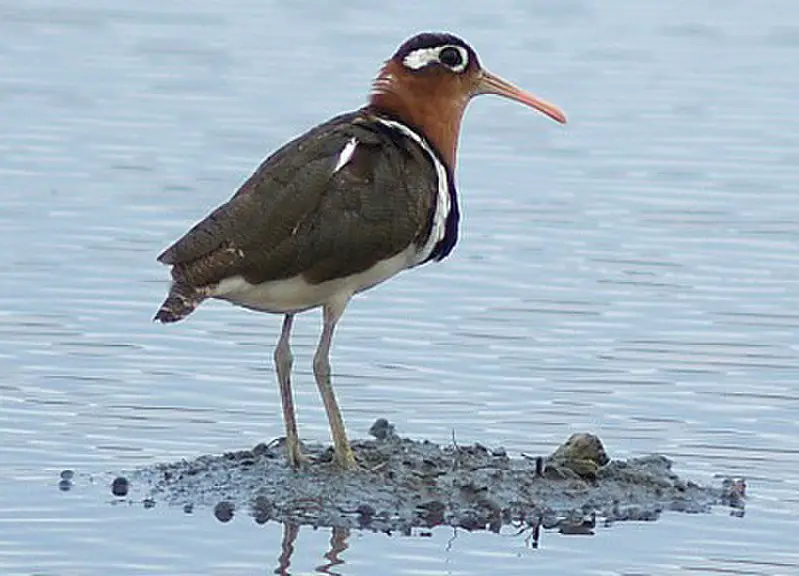
Painted snipes are beautiful and unique wading birds found in the Rostratulidae family. They have short legs, long bills, and a striking plumage which distinguishes them from true snipes.
Males tend to be smaller than females with duller overall coloration. There are three species of painted snipe.
The Greater Painted Snipe, Lesser Painted Snipe, and Australian Painted Snipe – all three have different habitats ranging from wetland pools to grasslands or mangroves depending on their region.
These birds feed mainly on earthworms but also consume insects, crustaceans and plant material when available.
As they rely heavily on wetlands for breeding purposes it is important that we protect these precious habitats so that this special bird can continue to thrive.
Scientific classification:
| Kingdom | Animalia |
| Phylum | Chordata |
| Class | Aves |
| Order | Charadriiformes |
| Suborder | Thinocori |
| Family | Rostratulidae Coues, 1888 |
Also Featured In: Most Common Taiwan Birds, Queensland Birds You Should Know
10. Plovers

Plovers are a family of around 64-68 species of ground-dwelling birds, commonly found in open country such as fields, meadows and tundras.
They have short bills with webbed feet to help them forage through mud or shallow water.
Plover plumage is usually mottled brown though some species may have brighter colors on the head and wings.
These birds feed mainly on insects but can also eat small crustaceans and worms.
Plovers breed during springtime when they dig holes in sandy or pebbled beaches to lay their eggs which hatch after about 3 weeks incubation period.
They use distraction display behaviour by pretending an injury to the predators away from their nests if needed for protecting their young ones.
Scientific classification:
| Kingdom | Animalia |
| Phylum | Chordata |
| Class | Aves |
| Order | Charadriiformes |
| Family | Charadriidae Leach, 1820 |
Also Featured In: Common Uzbekistan Birds, Most Common Romanian Birds
11. Stilts And Avocets
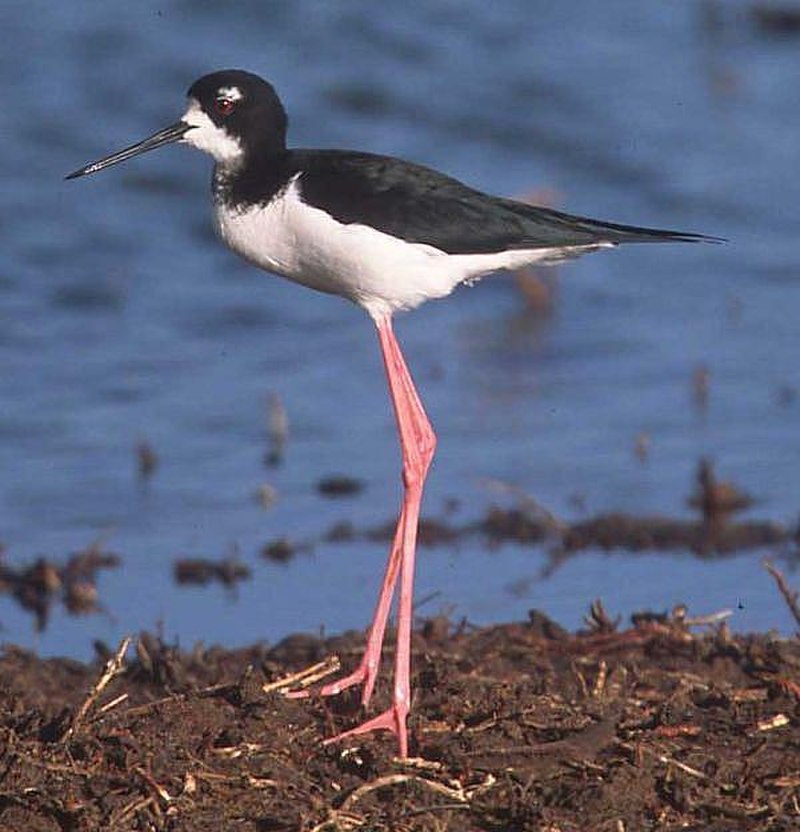
Stilts and avocets are two distinct groups of birds belonging to the family Recurvirostridae. They range in length from 30-46 cm (12-18 inches) and weigh between 140 – 435 g (4.9 – 15.3 ounces).
Males usually have slightly larger bodies than females, with long thin legs, necks and bills.
Avocet bills curve upwards uniquely while stilt beaks remain straight most times.
These wading birds live mainly near shorelines or wetlands where they feed on aquatic invertebrates like brine shrimp, insects etc., occasionally supplementing their diet with seeds or small fish too.
Stilts also inhabit open fields in search of food sources such as earthworms or grasshoppers during the non-breeding season.
Both groups migrate over large distances for warmer weathers when it gets cold outside.
Scientific classification:
| Kingdom | Animalia |
| Phylum | Chordata |
| Class | Aves |
| Order | Charadriiformes |
| Suborder | Charadrii |
| Family | Recurvirostridae Bonaparte, 1854 |
Also Featured In: Native Birds of Kazakhstan, Birds of Sweden
12. Glareolidae
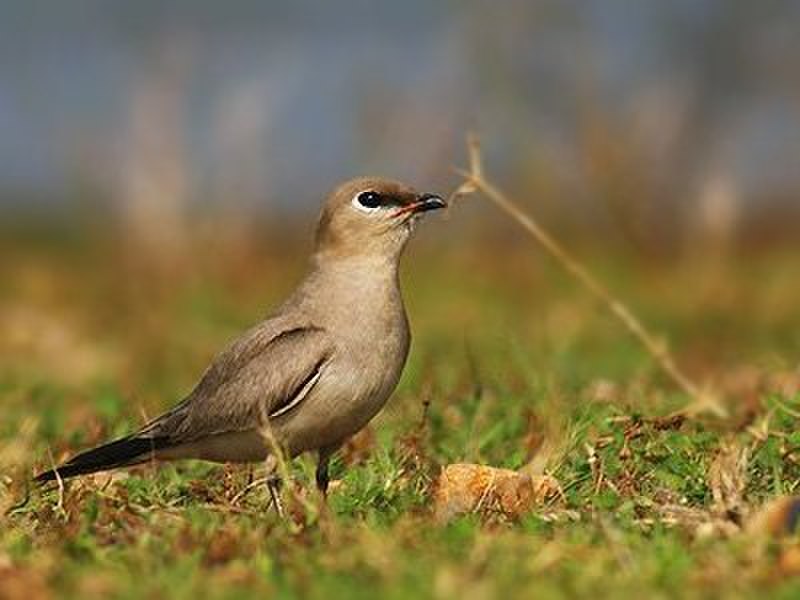
Glareolidae is a family of wading birds, consisting of four genera and 17 species. They are distinguished from other charadrii by their long bills which have a slight downward curve.
Glareolidae live around open grasslands and deserts, where they hunt for insects using the bill to probe into soil or vegetation.
Most species are found in Africa but two pratincoles inhabit parts of Europe and Asia as well.
Coursers tend to be larger than pratincoles with longer legs allowing them to run quickly across sandy dunes while feeding on small animals like lizards or spiders.
Pratincoles feed mainly on flying insects, snatching them out of midair with great agility during flight.
All glareolids share unique features such as large eyes that help it spot prey at night easily making this group one interesting bird family.
Scientific classification:
| Kingdom | Animalia |
| Phylum | Chordata |
| Class | Aves |
| Order | Charadriiformes |
| Suborder | Lari |
| Family | Glareolidae CL Brehm, 1831 |
Also Featured In: Syrian Birds You Need to Know, Belarus Birds You Should Know
13. Red-Crowned Crane
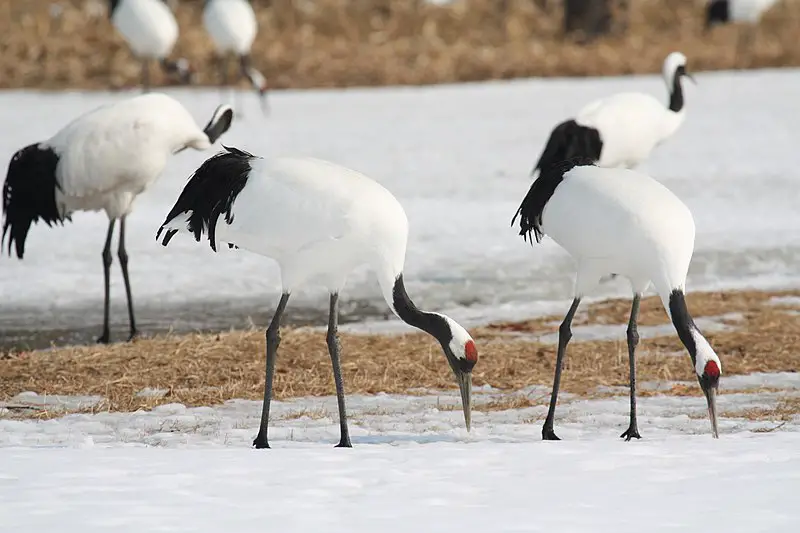
The Red-crowned Crane, also known as the Manchurian or Japanese crane, is a rare and majestic East Asian bird. It has striking red feathers on its head which give it an elegant crown look.
These cranes are large and can be seen in some parts of their range flying gracefully with slow wing beats. When they land to rest you may hear them making loud calls that carry across wide distances.
Not only do these birds have beautiful plumage but they also hold spiritual significance for many cultures throughout Asia where they are considered symbols of luck, loyalty and longevity.
With conservation efforts increasing more people will get to experience this amazing species.
Scientific classification:
| Kingdom | Animalia |
| Phylum | Chordata |
| Class | Aves |
| Order | Gruiformes |
| Family | Gruidae |
| Genus | Grus |
| Species | G. japonensis |
Also Featured In: Asian Birds, Birds You’ll Find in Hokkaido
14. Swan Goose
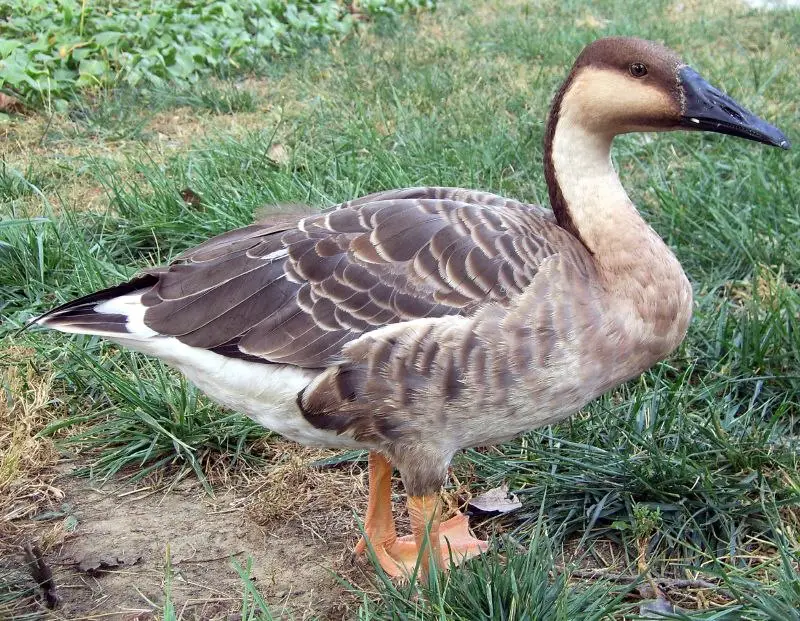
Swan geese are a large species of goose with an impressive wingspan. They have a natural breeding range in Mongolia, northern China and the Russian Far East.
During winter migration they can be seen further south in central and eastern China, though vagrants have been sighted as far away as Japan, Korea, Kazakhstan Laos Siberia Taiwan Thailand and Uzbekistan.
Swan Geese sport white feathers on their heads neck chest back tail flanks underwings and bellies while having black flight feathers that contrast against its overall appearance.
The bill is often pinkish grey or orange-red along with bright yellow legs & feet which make them quite stunning to observe.
While not endangered yet sadly swan geese numbers continue to decline due to hunting for eggs & downy plumage among other things so conservation efforts must remain strong if we want these magnificent birds around for future generations.
Scientific classification:
| Kingdom | Animalia |
| Phylum | Chordata |
| Class | Aves |
| Order | Anseriformes |
| Family | Anatidae |
| Genus | Anser |
| Species | A. cygnoides |
15. Lesser Whistling Duck
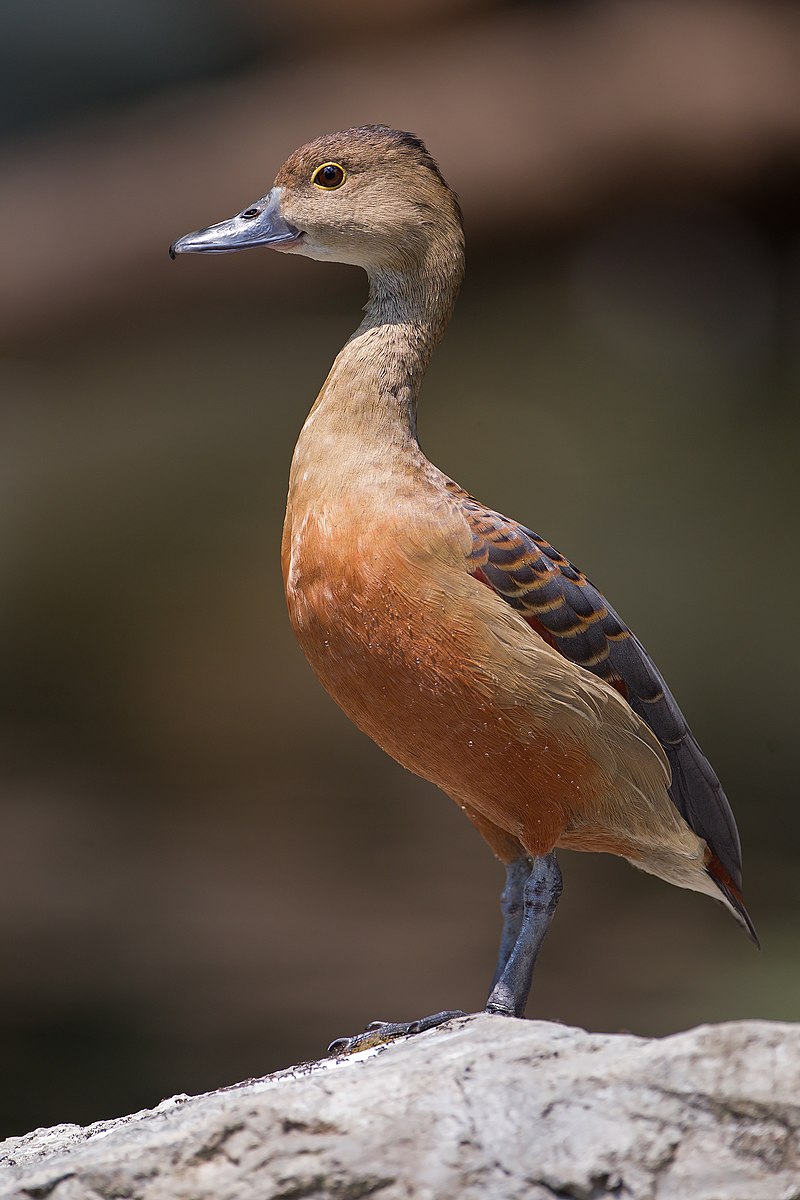
The Lesser Whistling Duck is a species of whistling duck found in the Indian subcontinent and Southeast Asia.
It has an unmistakable appearance, with its brown body, white-streaked wings and distinctive black tail feathers.
The adult ducks have red bills, eyes and legs with yellowish webbed feet for swimming.
They are generally nocturnal feeders but during the day they can be seen around lakes or wet paddy fields in flocks perching on trees or even building their nest inside tree hollows.
Their diet mainly consists of seeds from aquatic plants as well as small fish, mollusks and insects occasionally taken while wading or diving into water bodies to find food sources.
Scientific classification:
| Kingdom | Animalia |
| Phylum | Chordata |
| Class | Aves |
| Order | Anseriformes |
| Family | Anatidae |
| Genus | Dendrocygna |
| Species | D. javanica |
Also Featured In: Birds of Karnataka, Common Birds of Maharashtra
16. Scaly-Sided Merganser
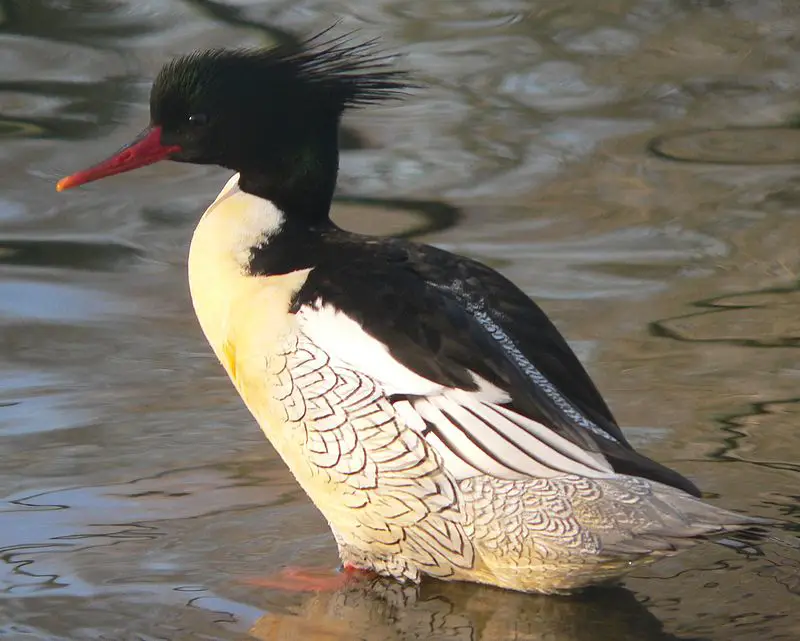
The Scaly-sided Merganser is a beautiful sea duck species found in Manchuria and extreme Southeast Siberia.
It has an impressive stature, with its thin red bill and scaled dark pattern on the flanks and rump drawing your attention.
Both male and female have unique elongated feathers that form their crest reaching almost to the shoulders.
Their population numbers are quickly declining due to poaching, illegal hunting practices, habitat loss from human activity as well as pollution of rivers caused by agricultural chemicals used nearby farms.
Conservation efforts are being taken to protect this endangered species such as providing protection laws for them during breeding season or creating protected areas where they can safely nest undisturbed.
While also offering food sources at other times of year when natural resources may be scarce. With these measures hopefully scaly-sided mergansers will become less endangered soon.
Scientific classification:
| Kingdom | Animalia |
| Phylum | Chordata |
| Class | Aves |
| Order | Anseriformes |
| Family | Anatidae |
| Genus | Mergus |
| Species | M. squamatus |
17. Crested Ibis
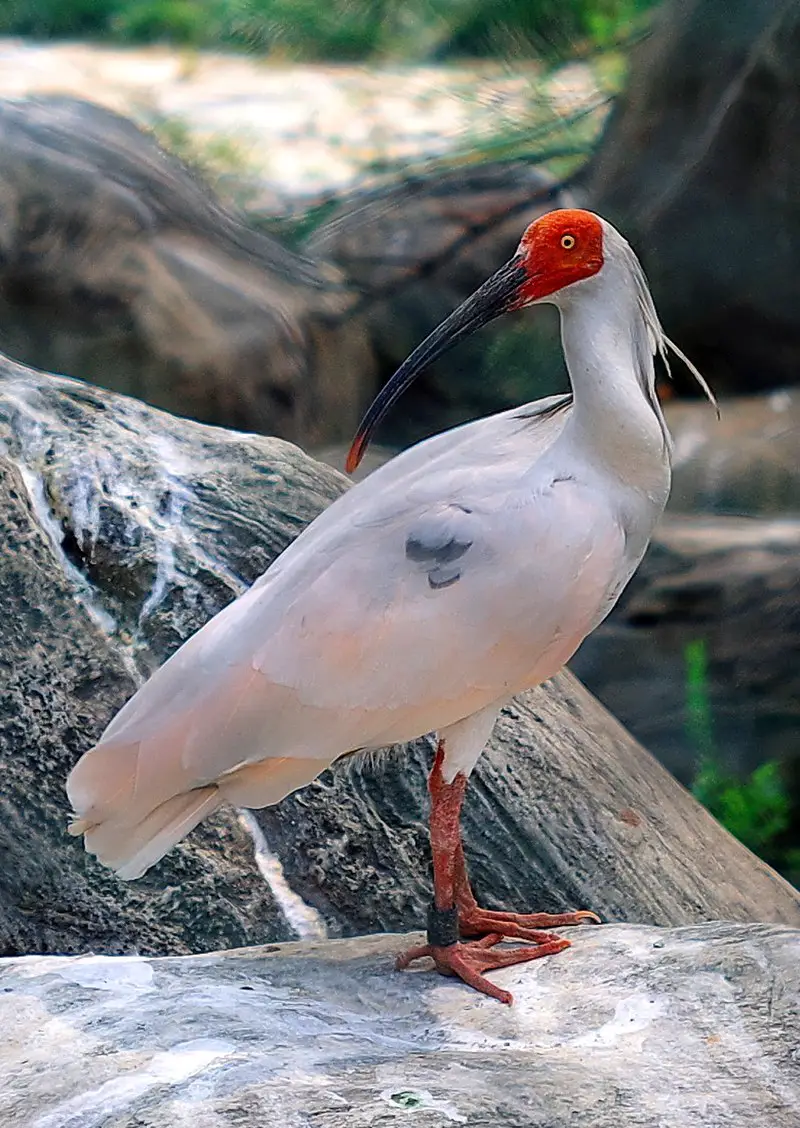
The Crested Ibis is a large white-plumaged bird that can grow up to 78.5 cm in length. It has red skin on its partially bare head, and sports a dense crest of white plumes on the nape which makes it easily identifiable from other species of ibises.
Native to eastern Asia, they inhabit pine forests and build their nests at the tops of trees. They mainly feed on frogs, insects, small rodents and fish but have also been known for scavenging carrion occasionally.
When food is scarce during winter months or drought conditions. In recent decades due to various environmental factors like loss of habitat.
Destruction as well as illegal hunting by humans; this species has faced severe decline in population numbers making it vulnerable to extinction if protection measures are not taken soon enough.
Scientific classification:
| Kingdom | Animalia |
| Phylum | Chordata |
| Class | Aves |
| Order | Pelecaniformes |
| Family | Threskiornithidae |
| Genus | Nipponia Reichenbach, 1850 |
| Species | N. nippon |
Also Featured In: Tokyo Birds You Need to Know,
18. Tropicbirds
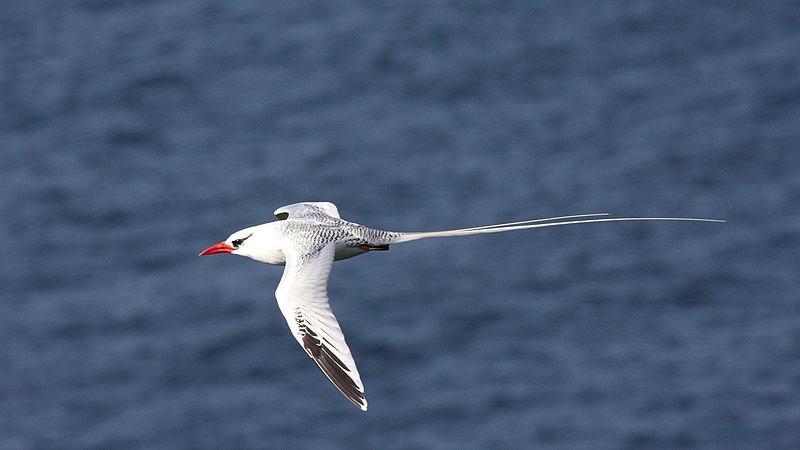
Tropicbirds are a unique family of birds, belonging to the order Phaethontiformes. They have long, white tail feathers and bright-colored beaks.
These features make them easily recognizable from other bird species.
Tropicbirds live in tropical seas throughout the world where they feed on fish and squid near coral reefs or ocean surface waters.
They breed mainly on remote islands with few predators, nesting their eggs in crevices or burrows dug into sandy soil by both parents for about five weeks until hatching takes place.
When not breeding tropicbirds can travel up to 10 000 km over several months before returning home again.
Their beauty is remarkable – so if you ever get a chance to see one of these magnificent birds flying gracefully above the sea then take it as an opportunity not to be missed.
Scientific classification:
| Kingdom | Animalia |
| Phylum | Chordata |
| Class | Aves |
| Clade | Eurypygimorphae |
| Order | Phaethontiformes Sharpe, 1891 |
Also Featured In: Guam Birds You Need to See, Birds that Live in Newfoundland and Labrador
19. Gruiformes
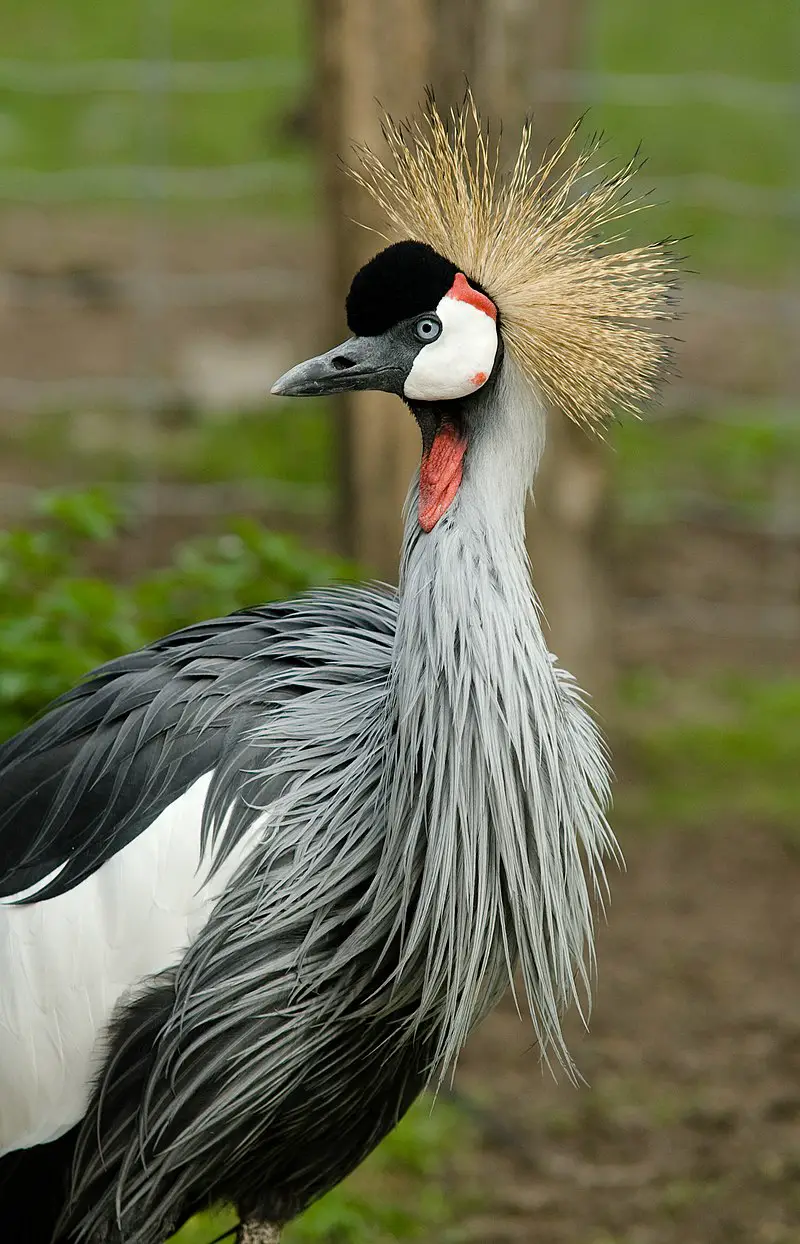
The Gruiformes is an order of birds which contains a large variety of families, both living and extinct. They are found all over the world in many different habitats, including wetlands and grasslands.
The name comes from Latin for “crane-like” due to their similar appearance to cranes. Many members of this group have long legs adapted for wading or running on land depending on species.
They also typically have long beaks used for hunting prey such as insects and small animals like fish, frogs and lizards.
Other traits commonly shared by these birds include strong wings with broad flight feathers that help them soar through the air when migrating or searching food sources during winter months.
In addition to these physical characteristics, some Gruiformes also possess vocalizations unique among other bird orders – making them easily recognizable even at great distances.
Scientific classification:
| Kingdom | Animalia |
| Phylum | Chordata |
| Class | Aves |
| Clade | Gruimorphae |
| Order | Gruiformes Bonaparte, 1854 |
Also Featured In: Birds Found in Hungary, Bulgarian Birds
20. Bitterns
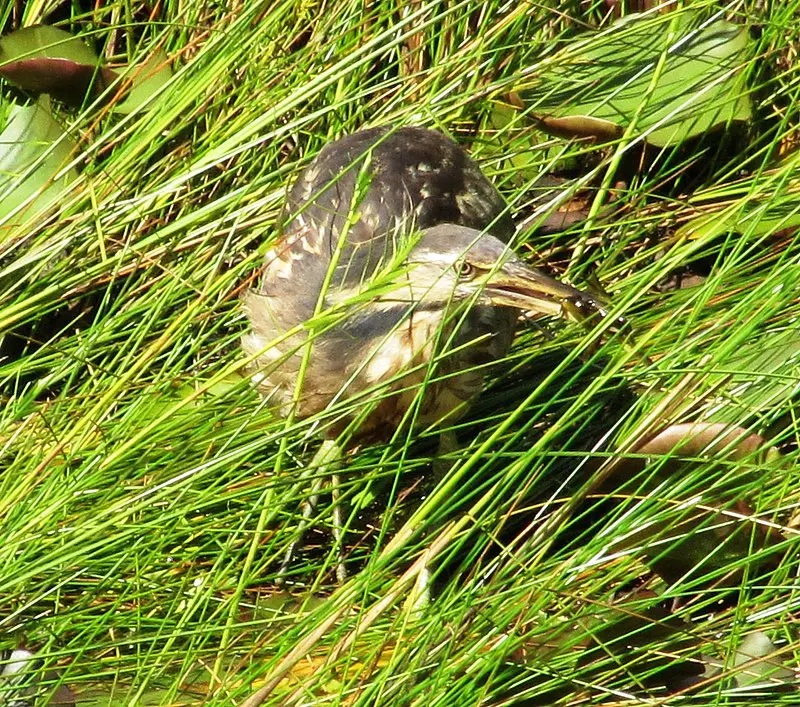
Bitterns are a type of heron, belonging to the Ardeidae family. They have shorter necks and tend to be more secretive than other members of this group.
These birds can usually be found near reed beds or wetlands, where they make their distinctive ‘booming’ call as part of their mating ritual.
Bitterns feed on insects, fish and amphibians which inhabit these areas – catching them with their long pointed bills.
Although bitterns are well camouflaged due to their brown-and-black striped feathers when standing still among reeds, they will fly away quickly if disturbed by humans nearby.
Scientific classification:
| Kingdom | Animalia |
| Phylum | Chordata |
| Class | Aves |
| Order | Pelecaniformes |
| Family | Ardeidae |
| Subfamily | Botaurinae Reichenbach, 1850 |
Also Featured In: Wetlands Birds You Should Know, Birds of Norfolk
21. Stejneger’s Scoter
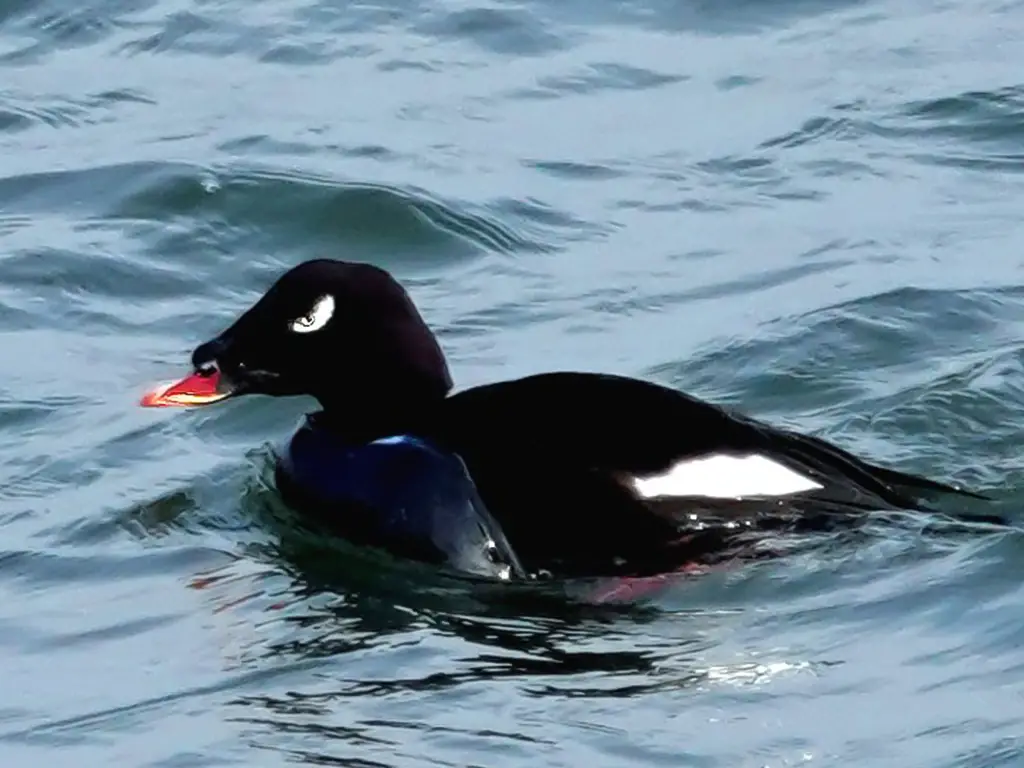
Stejneger’s scoter is a large sea duck, belonging to the genus Melanitta. Named after Norwegian-born ornithologist Leonhard Stejneger.
This bird was described by American ornithologist Robert Ridgway in 1887 and given its scientific name: Oidemia stejnegeri.
These ducks are mostly black with white markings on their wings and have distinctive orange-yellow bills.
They inhabit coastal waters of Arctic regions during the breeding season before migrating southwards for wintering grounds along the coasts of northern Europe, North America, and Asia Pacific islands.
Their diet includes small fish such as sand lance, mackerels, or herring that they hunt near the surface while diving underwater using their webbed feet under strong currents caused by tides or river mouths due to heavy rainfalls.
Scientific classification:
| Kingdom | Animalia |
| Phylum | Chordata |
| Class | Aves |
| Order | Anseriformes |
| Family | Anatidae |
| Genus | Melanitta |
| Species | M. stejnegeri |
22. Saker Falcon
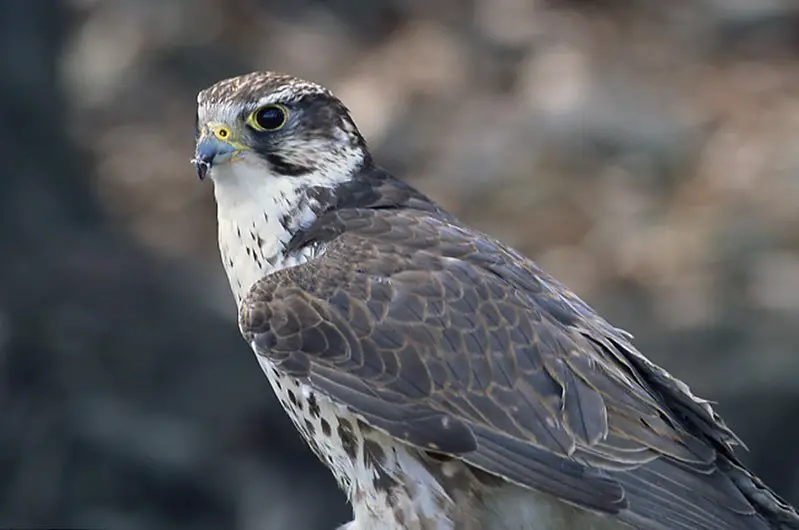
The saker falcon is a large species of falcon that is found across the Palearctic from central Europe all the way to Manchuria.
It typically migrates, except for in southern parts of its range where it winters in Ethiopia, Arabia, northern Pakistan and China.
This majestic bird has been designated as the national bird of Hungary, United Arab Emirates and Mongolia due to its beauty and gracefulness.
Its plumage can be brownish-grey or light grey with dark spots while they have bright yellow eyes which contrast their feathers beautifully.
They are also quite agile when flying at high speeds with wingspan ranging between 1-1.5 m long – perfect for soaring.
Scientific classification:
| Kingdom | Animalia |
| Phylum | Chordata |
| Class | Aves |
| Order | Falconiformes |
| Family | Falconidae |
| Genus | Falco |
| Subgenus | Hierofalco |
| Species | F. cherrug |
Also Featured In: Common Serbian Birds,
23. Golden Pheasant
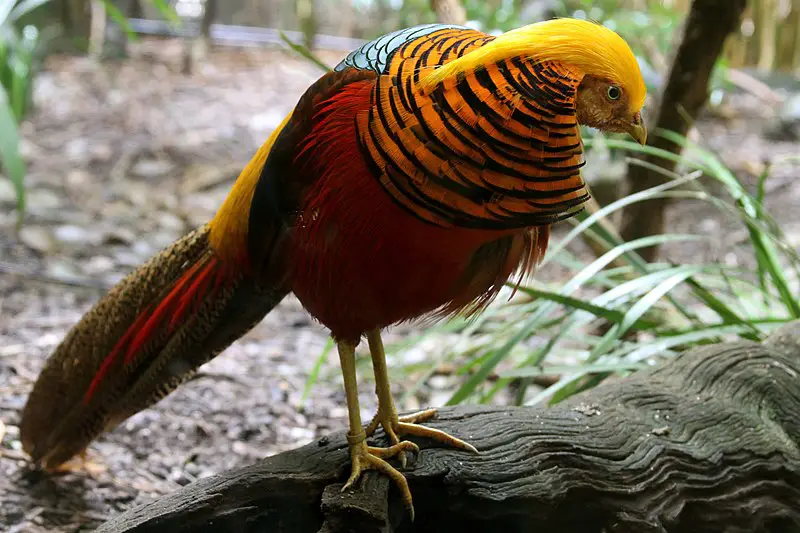
The golden pheasant is a beautiful bird of the Galliformes family and Phasianidae order. It has an exotic look thanks to its bright feathers and crest that have golden hues.
Native to mountainous areas of western China, it can be found in forests there. Its scientific name Chrysolophus pictus reflects this, as “Chrysolophos” means “with a golden crest”.
While “pictus” refers to being painted or decorated with colors such as gold, red, yellow and green on its body.
The male’s colorful plumage makes for an impressive sight.
Scientific classification:
| Kingdom | Animalia |
| Phylum | Chordata |
| Class | Aves |
| Order | Galliformes |
| Family | Phasianidae |
| Genus | Chrysolophus |
| Species | C. pictus |
24. Chinese Grouse
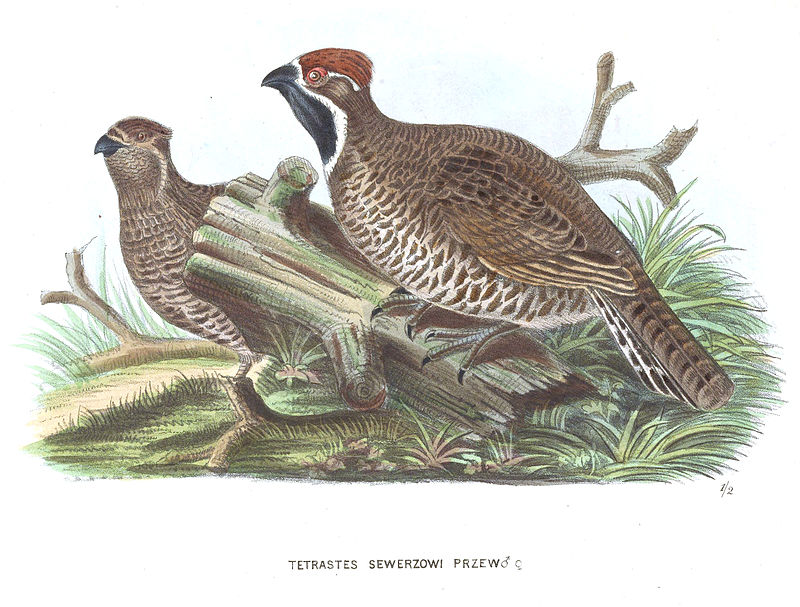
The Chinese grouse, also known as Severtzov’s or the black-breasted hazel grouse, is a close relative of the hazel grouse.
It lives in coniferous montane forests in central China and has less white coloring on its head and neck than its well-known counterpart.
The species was named after Russian zoologist Nikolai Severtzov who first described it during his travels to Central Asia between 1858 and 1865.
This sedentary bird feeds mainly on plants such as seeds, buds, leaves, twigs, berries and insects like beetles or caterpillars.
Its main predators are raptors including hawks and eagles which hunt for chicks but adults can escape by hiding under cover or flying off quickly when disturbed from their roosts at night.
Conservation efforts have been implemented through protected areas where these birds live but further protection measures should be taken to ensure their survival into future generations.
Scientific classification:
| Kingdom | Animalia |
| Phylum | Chordata |
| Class | Aves |
| Order | Galliformes |
| Family | Phasianidae |
| Genus | Tetrastes |
| Species | T. sewerzowi |
25. Light-Vented Bulbul
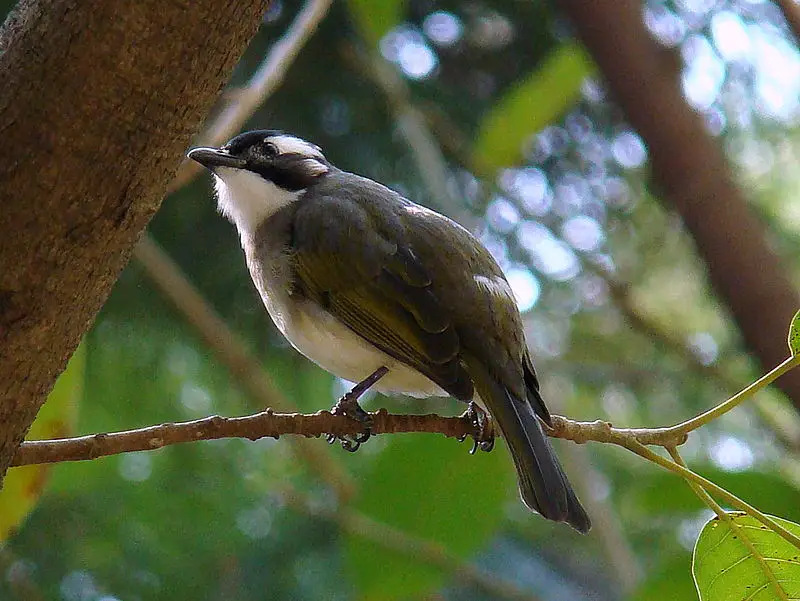
The light-vented bulbul is a species of songbird found in central and southern China, Hong Kong, Macao, northern Vietnam, Japan and Taiwan.
It typically inhabits lightly wooded habitats but can also be seen frequenting towns, suburbs and urban parks.
This bird has olive green upperparts with yellowish underparts; its wings are black tipped with white patches whilst the tail is entirely dark brown.
Its call consists of low whistles that vary from sharp to soft as well as raspy chatters which it uses for communication purposes between members of its flock.
Furthermore this small sized bird feeds on insects such as flies or beetles along with other invertebrates like worms or snails among others making it an important part of many ecosystems across Asia.
Scientific classification:
| Kingdom | Animalia |
| Phylum | Chordata |
| Class | Aves |
| Order | Passeriformes |
| Family | Pycnonotidae |
| Genus | Pycnonotus |
| Species | P. sinensis |
Also Featured In: Hong Kong Birds You Need to See, Common Birds of Hainan
26. Brown Eared Pheasant
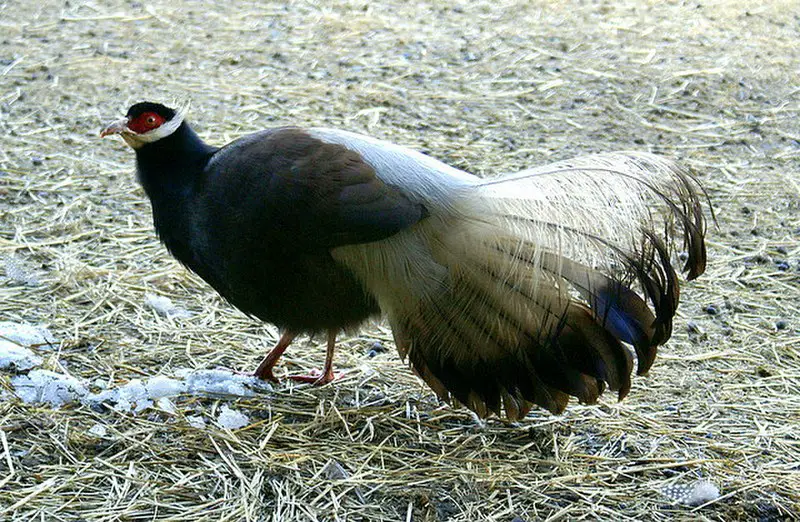
The Brown-eared pheasant is a large, dark brown bird endemic to northeastern China. It stands at 96 to 100 cm long and has stiff white ear coverts that look like a moustache.
The crown is black with red facial skin, while its tail consists of 22 elongated rectrices feathers which are barred in black and chestnut coloration.
During the breeding season it will form flocks of up to 30 individuals and feed on seeds, buds, fruits as well as invertebrates such as insects or worms found near streams or ponds for water sources.
Its natural habitat includes montane forests of Shanxi province; however due to poaching this species is now classified by IUCN Red List in vulnerable status since 2004.
Scientific classification:
| Kingdom | Animalia |
| Phylum | Chordata |
| Class | Aves |
| Order | Galliformes |
| Family | Phasianidae |
| Genus | Crossoptilon |
| Species | C. mantchuricum |
27. Coots
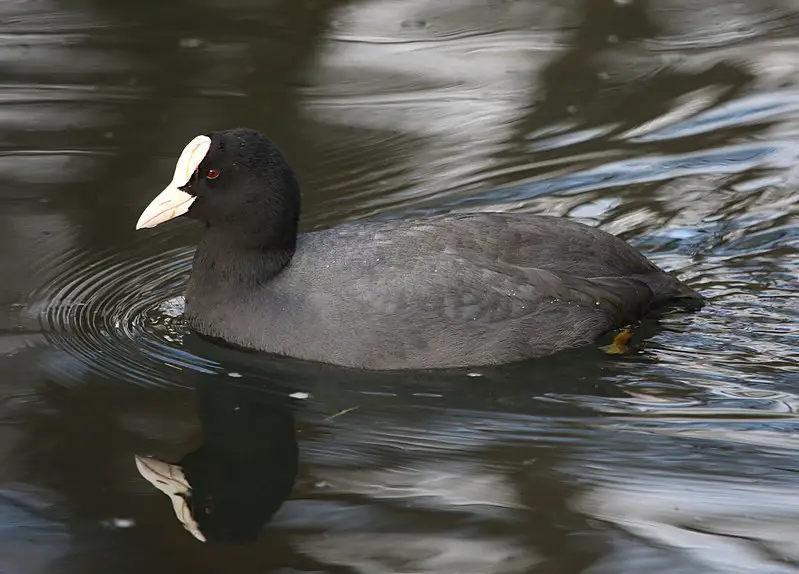
Coots are members of the rail family, Rallidae. They have black plumage and can often be seen swimming in open water.
Quite distinct from their close relatives – moorhens – coots appear dumpier and lack a red frontal shield on their forehead.
These birds reach an average length between 11 to 17 inches with wingspans ranging from 20-27 inches wide; they weigh up to 2 pounds when fully grown.
Coots feed mainly on plant material such as seeds, buds, fruits and leaves but will also eat small aquatic invertebrates like crustaceans or insects if available.
The nest is built by both parents using vegetation that has been collected at the edge of wetlands or ponds.
Which makes it difficult for predators to access them easily making them better protected than other species of bird nests found near water sources.
Scientific classification:
| Kingdom | Animalia |
| Phylum | Chordata |
| Class | Aves |
| Order | Gruiformes |
| Family | Rallidae |
| Genus | Fulica Linnaeus, 1758 |
Also Featured In: Most Common Lake Birds, Amsterdam Birds You Should Know
28. Chinese Crested Tern
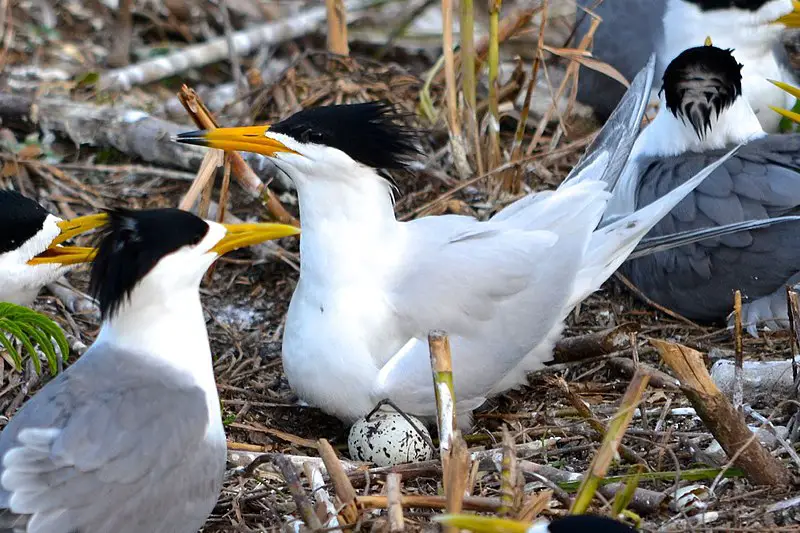
The Chinese crested tern is a beautiful bird with an impressive wingspan. It has black and white plumage, yellow legs and feet, and a distinctive bill pattern – yellow with a thick black tip.
This species is closely related to the Sandwich tern and Lesser Crested Tern but can easily be distinguished by its reversed colouring on its bill.
As the county bird of Lienchiang County in Fuchien province it’s well-known locally for being both hardy and graceful as it glides through the air.
The diet consists mainly of small fish which they catch whilst flying over shallow waters or coastal areas, making them great hunters.
They are also capable of floating just above oceans surfaces using their long narrow wingspans enabling them to spot potential prey below more effectively than other sea birds.
All-in-all these spectacular creatures make wonderful additions to any environment they inhabit.
Scientific classification:
| Kingdom | Animalia |
| Phylum | Chordata |
| Class | Aves |
| Order | Charadriiformes |
| Family | Laridae |
| Genus | Thalasseus |
| Species | T. bernsteini |
29. Cabot’s Tragopan
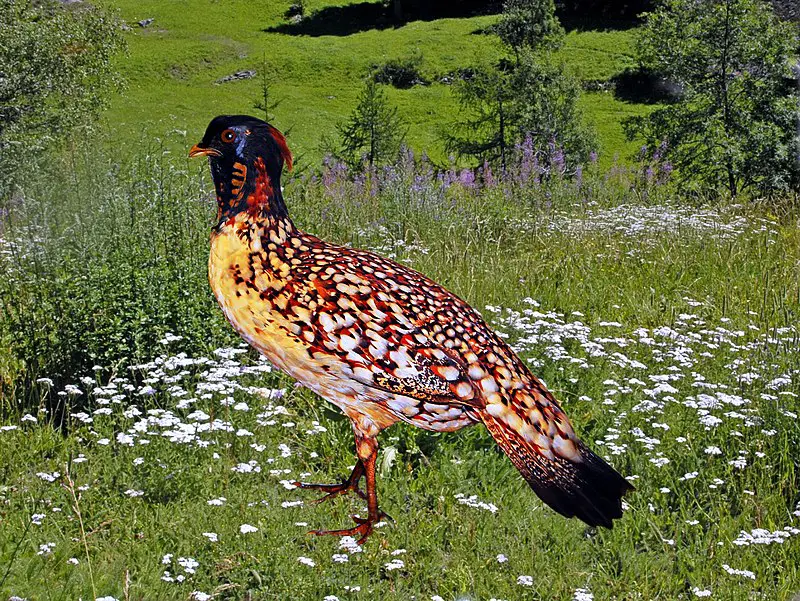
Cabot’s tragopan is a stunning large bird found in southeast China. It was named after ornithologist Samuel Cabot III and also goes by the common name Chinese tragopan or yellow-bellied tragopan.
This beautiful pheasant has bright plumage, with blue feathers on its face, neck, and breast combined with orange ruffs along its sides.
The two subspecies of this bird have distinct markings; the male nominates race has white barring on both upperside tail coverts while females are mostly brownish-grey overall.
Its habitat consists mainly of evergreen broadleaf forests at elevations between 500 to 1,400 m above sea level.
where they feed mainly on fruits, buds, and invertebrates such as caterpillars and beetles that it finds amongst leaf litter under trees or shrubs during foraging trips near tree canopies.
Conservation programs for this endangered species are currently ongoing to ensure their population remains stable in the future.
Scientific classification:
| Kingdom | Animalia |
| Phylum | Chordata |
| Class | Aves |
| Order | Galliformes |
| Family | Phasianidae |
| Genus | Tragopan |
| Species | T. caboti |
30. Chinese Pond Heron
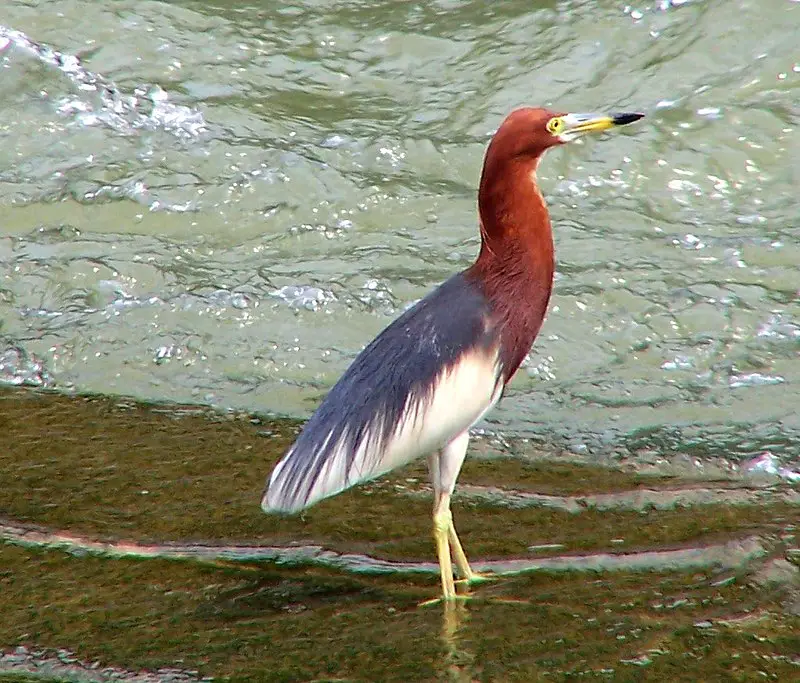
The Chinese pond heron (Ardeola bacchus) is a species of freshwater bird belonging to the heron family, Ardeidae.
It is one of six “pond herons” that inhabit East Asia and can be found in parts of China, Japan, and Korea.
This species typically inhabits shallow marshes, flooded fields, or rice paddies near rivers and streams where it feeds on small fish, frogs, insects, and other aquatic life forms.
Its plumage features white feathers with black tips creating an elegant look when perched by the water’s edge waiting for prey.
The Chinese pond heron has been known to form mixed-species flocks which include egrets as well as other wading birds such as storks; its presence adds interest to any wetland habitat they call home.
Scientific classification:
| Kingdom | Animalia |
| Phylum | Chordata |
| Class | Aves |
| Order | Pelecaniformes |
| Family | Ardeidae |
| Genus | Ardeola |
| Species | A. bacchus |
Also Featured In: Birds That Live In Phuket Island,
31. Spoon-Billed Sandpiper
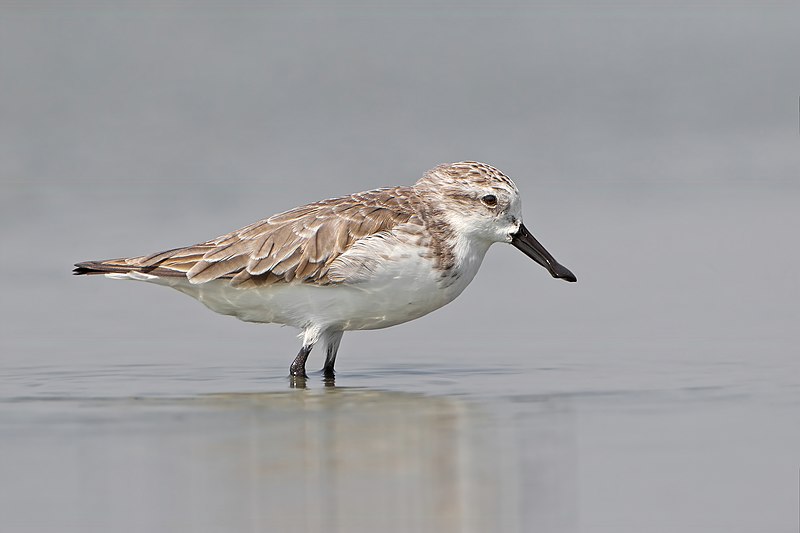
The spoon-billed sandpiper is a small wader that has been facing drastic population decline since 1970.
It breeds in the Bering Sea and winters in Southeast Asia, yet its estimated breeding population of 350 to 500 by 2000 reveals how greatly it has suffered from human activities such as overfishing and habitat destruction.
Its scientific name Platalea pygmea was proposed by Carl Linnaeus himself, highlighting just how rare this species really is.
This bird’s unique beak shape allows it to feed on crustaceans, worms, larvae and other invertebrates – however without conservation efforts these birds may soon vanish forever.
Scientific classification:
| Kingdom | Animalia |
| Phylum | Chordata |
| Class | Aves |
| Order | Charadriiformes |
| Family | Scolopacidae |
| Genus | Calidris |
| Species | C. pygmaea |
Also Featured In: Flight Birds You Should Know, Urban Birds of Hong Kong
32. Eared Pheasant
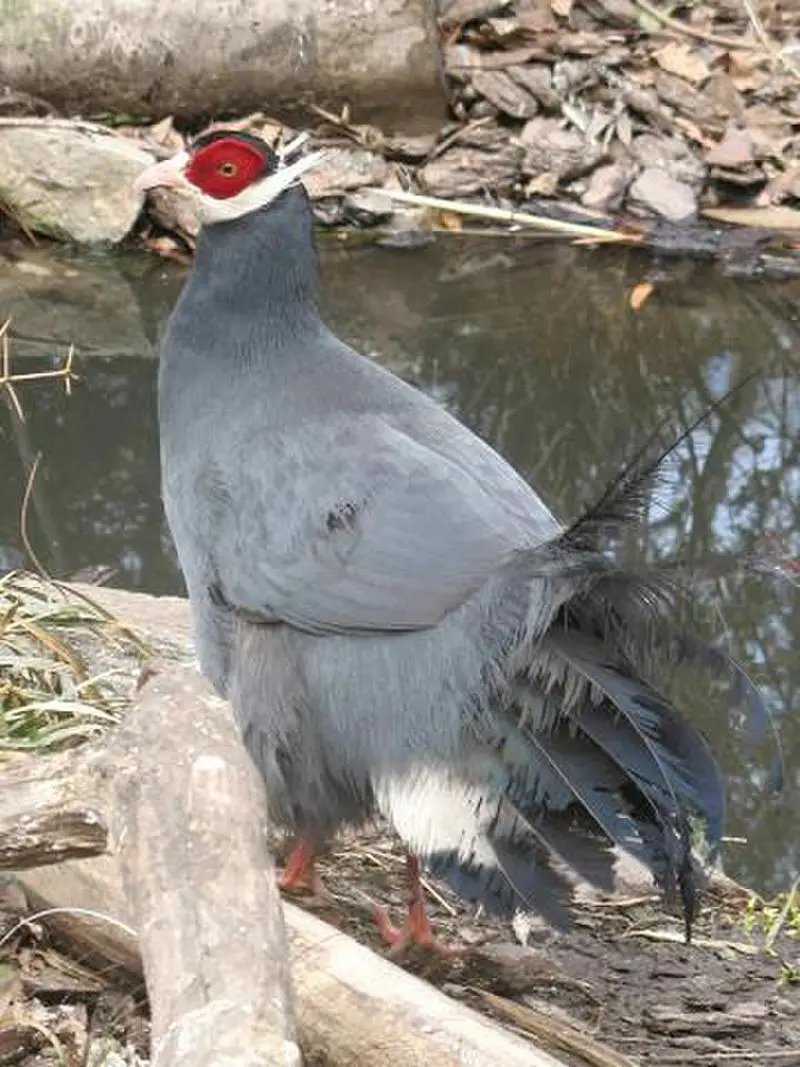
Eared pheasants are a type of bird in the Phasianidae family, first identified by Brian Houghton Hodgson in 1838. This genus includes four species which stand out due to their unique white fringe feathers and fringed head crests.
They can be found living primarily in alpine regions throughout China, Mongolia and parts of Nepal. Eared pheasants feed mainly on insects, grain seeds or berries; often times they will also eat small reptiles or amphibians if available.
Their habitats range from forests to grasslands with rocky cliffs for nesting sites; these birds have even been known to live up as high as 4500 metres above sea level.
In terms of appearance, males feature bright plumage while females tend towards duller colours that help them blend into their surroundings more effectively when incubating eggs or caring for chicks.
These beautiful creatures are an integral part of many ecosystems around the world and play an important role in maintaining balance within their environments.
Scientific classification:
| Kingdom | Animalia |
| Phylum | Chordata |
| Class | Aves |
| Order | Galliformes |
| Family | Phasianidae |
| Tribe | Phasianini |
| Genus | Crossoptilon Hodgson, 1838 |
33. Landfowl
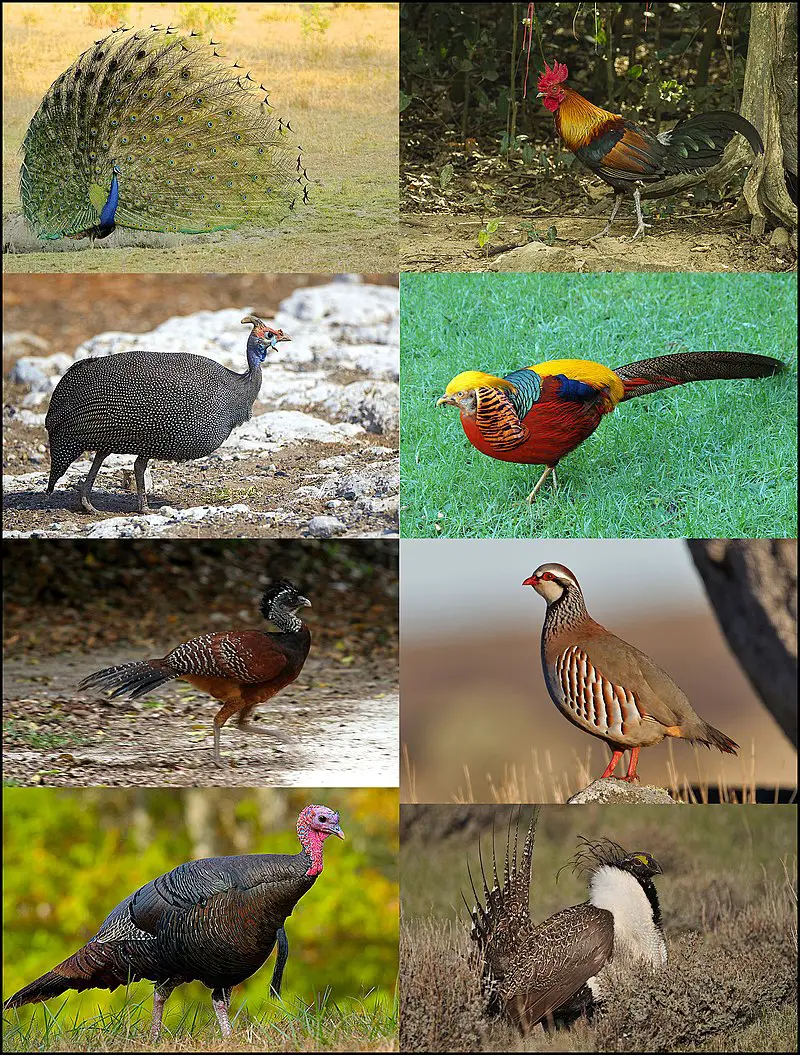
Landfowl birds belong to the Galliformes order, which includes turkeys, chickens, quail, and other ground-feeding species. These birds are essential in their environments as seed dispersers and predators.
Humans have found various uses for them such as raising them for meat or egg production or hunting them down for sports purposes. Landfowl inhabit almost all continents worldwide except Antarctica.
With around 290 different species of landfowl recorded so far, they come in a variety of shapes and sizes ranging from small quails to large gamebirds like turkey vultures.
Their diet consists mainly of plant seeds but they also supplement it with bugs and worms depending on availability within their habitat range.
To protect these beneficial creatures people should take care not to overhunt or destroy their living habitats as this can result in drastic population declines that may ultimately lead to extinction if no action is taken soon enough.
Scientific classification:
| Kingdom | Animalia |
| Phylum | Chordata |
| Class | Aves |
| Clade | Pangalliformes |
| Order | Galliformes Temminck, 1820 |
Also Featured In: Pet Birds that Live in India,
34. Collared Crow
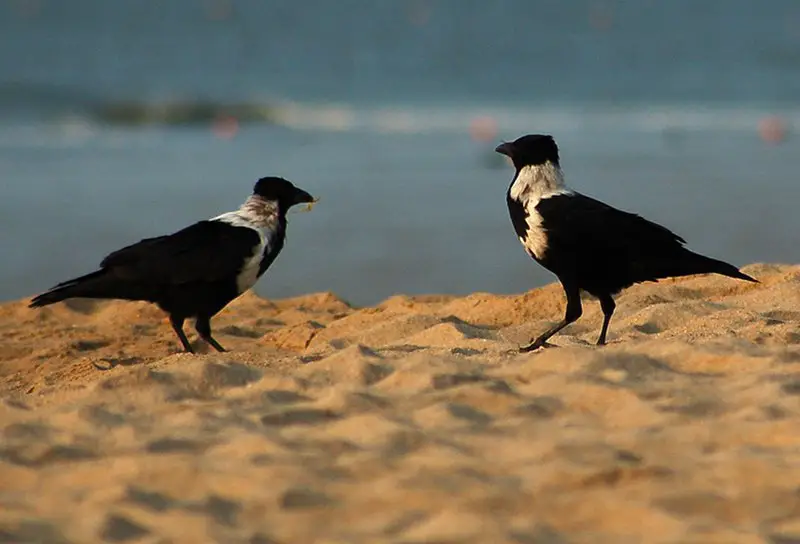
The collared crow is an impressive bird native to China and north of Vietnam. With glossy black plumage, the only exception being its white collar around its neck that gives it a distinguished look.
It stands about 52-55 cm in length with proportionately longer wings, tail, and bill than other species like carrion crows or ravens.
They are usually seen perching on trees or ground scavenging for food but they also make nests high off the ground which can reach up to 10 meters tall.
These birds are omnivorous so they eat a wide variety of foods including fruits, seeds insects and small animals such as frogs.
Collared Crows have been observed using tools such as sticks to get their food from hard places making them one of the most intelligent members amongst Corvidae family.
Scientific classification:
| Kingdom | Animalia |
| Phylum | Chordata |
| Class | Aves |
| Order | Passeriformes |
| Family | Corvidae |
| Genus | Corvus |
| Species | C. torquatus |
35. Common Green Magpie
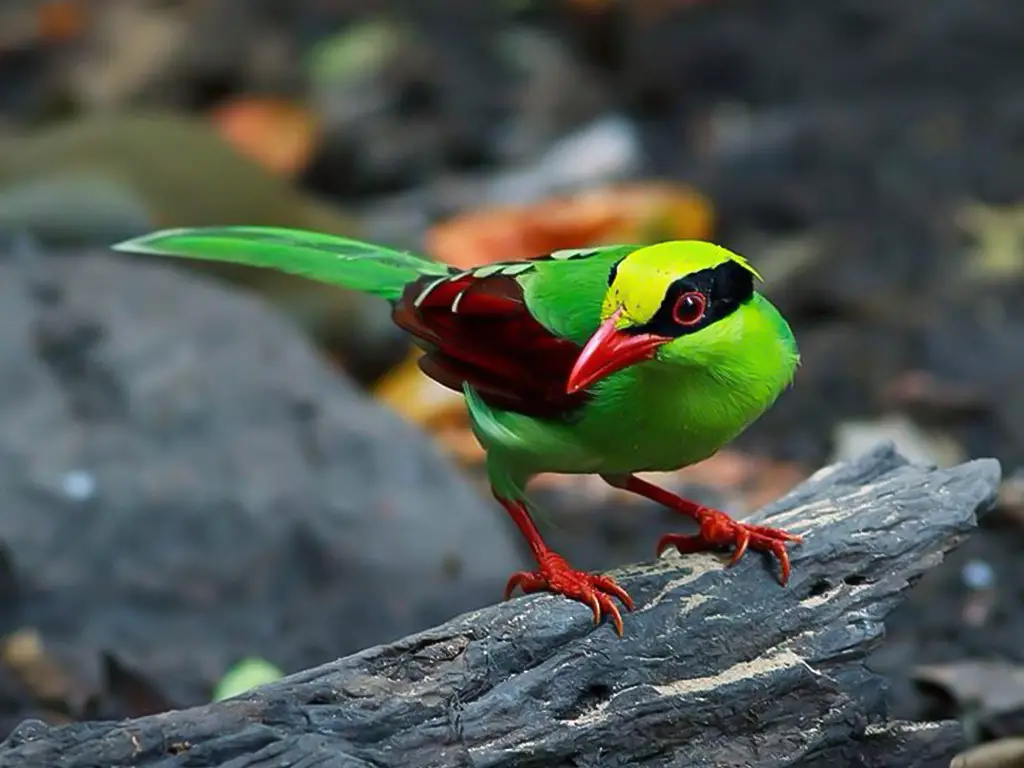
The Common green magpie is a stunningly beautiful bird belonging to the crow family. It has bright green feathers, slightly lighter on its underside and with a thick black stripe running from its bill through its eyes and down to the nape of its neck.
Growing roughly up to the size of a Eurasian jay or even smaller, its native habitat ranges across East Asia including India, China & Japan where they are often found in forests near water sources.
They have adapted well to human environments to make them popular as cage birds though their color can fade due to poor diet if not given carotenoid-based food regularly.
All in all these gorgeous birds make for both incredible wildlife sightings but also wonderful additions as pets.
Scientific classification:
| Kingdom | Animalia |
| Phylum | Chordata |
| Class | Aves |
| Order | Passeriformes |
| Family | Corvidae |
| Genus | Cissa |
| Species | C. chinensis |
Also Featured In: Birds that Live in Borneo Island,
36. Chinese Sparrowhawk
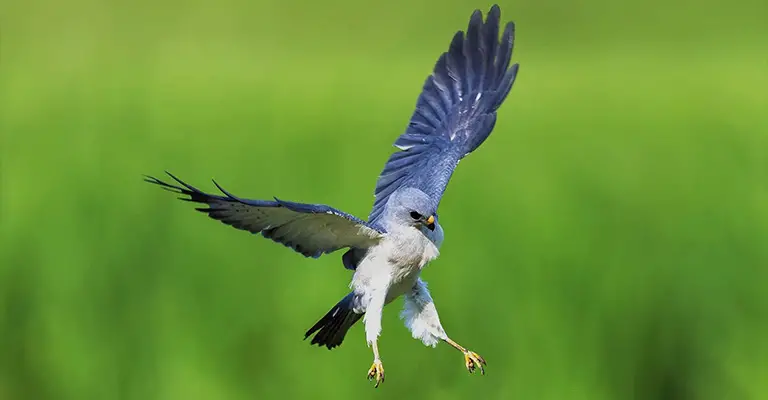
The Chinese sparrowhawk is a bird of prey in the family Accipitridae. It breeds mainly in Southeast China, Taiwan, Korea, and Siberia and migrates to Indonesia and the Philippines during winter.
The average length of this species ranges from 30-36 cm with females being larger than males. They have prominent black wing tips which help them identify easily among other birds.
Their diet consists mostly of small mammals like mice or lizards as well as insects such as grasshoppers or locusts that live near forests where they nest.
This species faces threats due to habitat loss for agricultural use so conservation efforts are necessary for their survival.
Scientific classification:
| Kingdom | Animalia |
| Phylum | Chordata |
| Class | Aves |
| Order | Accipitriformes |
| Family | Accipitridae |
| Genus | Accipiter |
| Species | A. soloensis |
Also Featured In: Common Philippines Birds, Birds that Commonly Found in Bali
37. Chinese Francolin
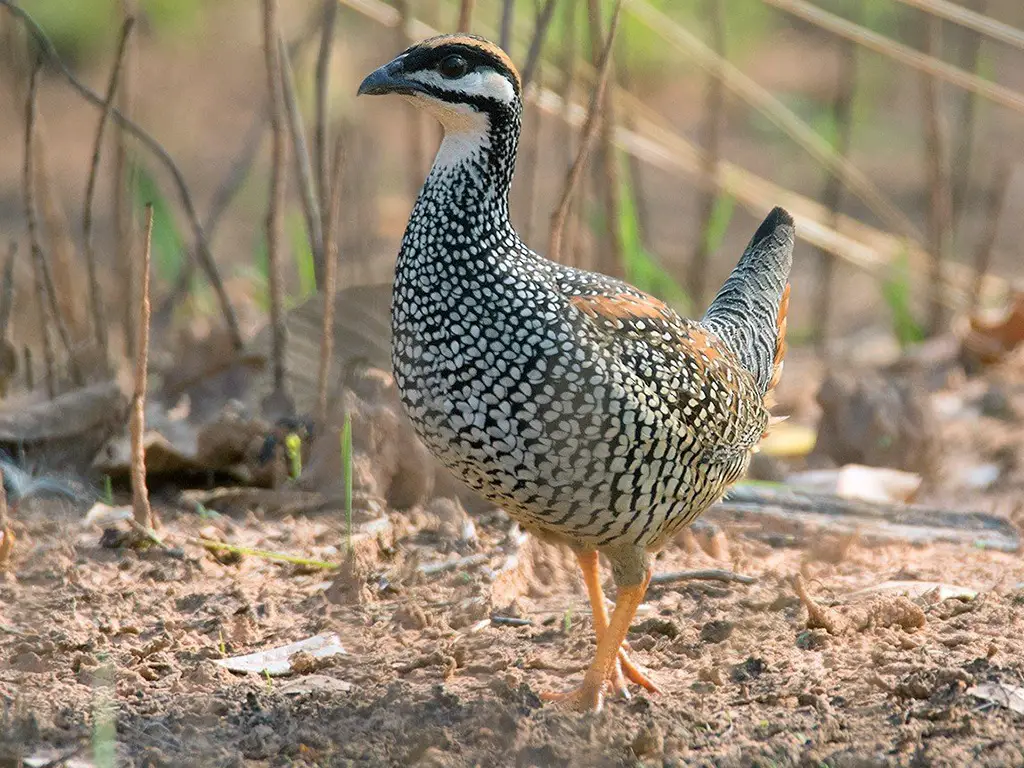
The Chinese francolin, also known as the Burmese francolin, is a species of game bird that can be found in parts of Asia. On average they reach lengths between 30-34 cm and weigh approximately 280-400 g.
Females tend to be slightly smaller than males. This particular species has been seen in countries such as China, India, Laos, and Vietnam among others.
It was even recently introduced to Mauritius and the Philippines for conservation purposes.
These birds are quite unique with their mottled brown feathers which help them blend into their environment perfectly making them difficult predators to spot from far away distances.
They have an interesting diet consisting mainly of seeds but supplemented by insects too.
Scientific classification:
| Kingdom | Animalia |
| Phylum | Chordata |
| Class | Aves |
| Order | Galliformes |
| Family | Phasianidae |
| Genus | Francolinus |
| Species | F. pintadeanus |
38. Collared Owlet
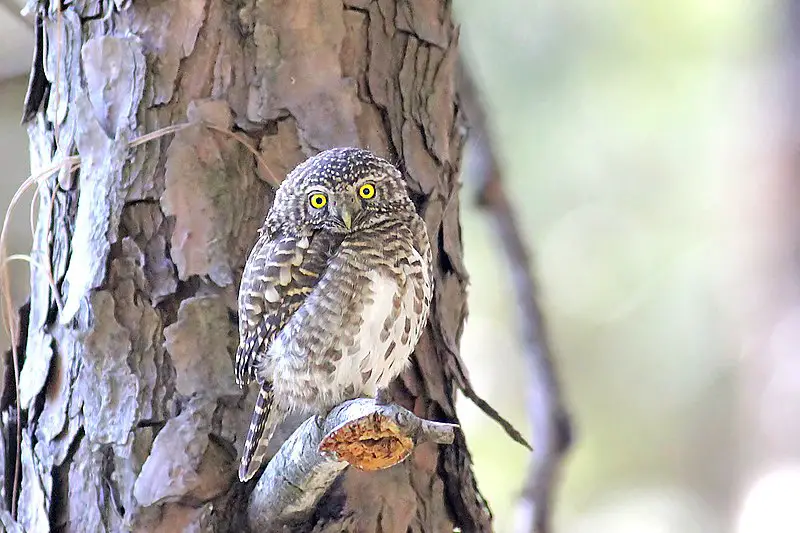
The Collared Owlet is a small species of owl found in Oriental Asia. It measures just 15cm and weighs 60g, making it the smallest owl in its region.
Its natural habitat consists of submontane and montane forests with open spaces.
This bird was first described back in 1836 by English ornithologist Edward Blyth as Noctua brodiei, though over time it has been more commonly referred to as Taenioptynx Brodiei or simply the Collared Pygmy Owl.
As its name implies, this little creature sports an impressive array of collar-like feathers around its neck which makes for quite a striking sight.
The Collared Owlet is generally solitary but can be seen flying together during migration periods where they will form flocks up to several hundred birds strong – truly amazing.
Scientific classification:
| Kingdom | Animalia |
| Phylum | Chordata |
| Class | Aves |
| Order | Strigiformes |
| Family | Strigidae |
| Genus | Taenioptynx |
| Species | T. brodiei |
Also Featured In: Birds Live In Koh Kood,
39. Chinese Grey Shrike
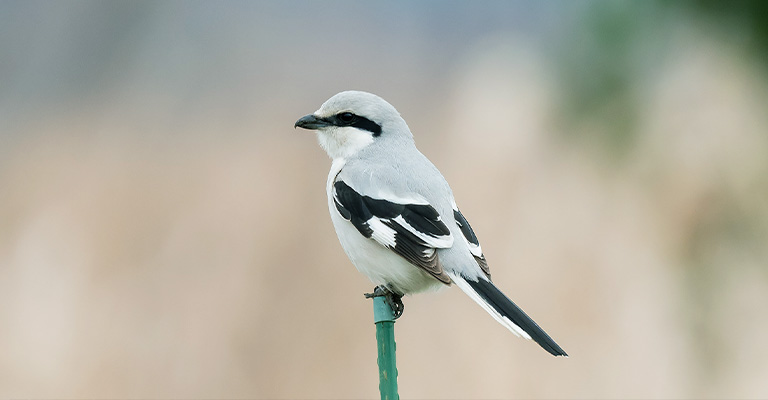
The Chinese grey shrike is a species of bird belonging to the family Laniidae. It can be found in China, Japan, North Korea, South Korea, Mongolia, and the Russian Far East.
The bird prefers temperate forests as its natural habitat. Its close relative -the giant grey shrike- used to be considered one of its subspecies until recently when it was given full recognition as an independent species.
This small songbird has light brown upper parts with darker streaks along its wings and tail feathers which are blackish-grey in coloration.
Its breast is paler than that of other members from this genus becoming white on some parts of its body such as the underwings or rump area.
It feeds mainly on insects but also takes some seeds during winter months making them omnivorous birds at that period of time.
Scientific classification:
| Kingdom | Animalia |
| Phylum | Chordata |
| Class | Aves |
| Order | Passeriformes |
| Family | Laniidae |
| Genus | Lanius |
| Species | L. sphenocercus |
40. Crimson-Breasted Woodpecker

The Crimson-breasted Woodpecker is a beautiful bird found in parts of Asia. It has bright red and black plumage, with its chest being the brightest part of its body.
These birds are typically seen foraging on tree trunks or branches in search of food such as insects and other invertebrates.
They are also known to feed on small fruits and seeds from trees, helping to disperse them throughout their habitat.
The species prefers moist lowland forests or montane forests at higher elevations where they can find plenty of food sources near each other.
While this woodpecker’s population appears stable overall, conservation efforts should still be taken to ensure that it continues to flourish in all areas it inhabits.
Scientific classification:
| Kingdom | Animalia |
| Phylum | Chordata |
| Class | Aves |
| Order | Piciformes |
| Family | Picidae |
| Genus | Dryobates |
| Species | D. cathpharius |
Also Featured In: Birds that Commonly Found in Andhra Pradesh,
41. Common Buttonquail
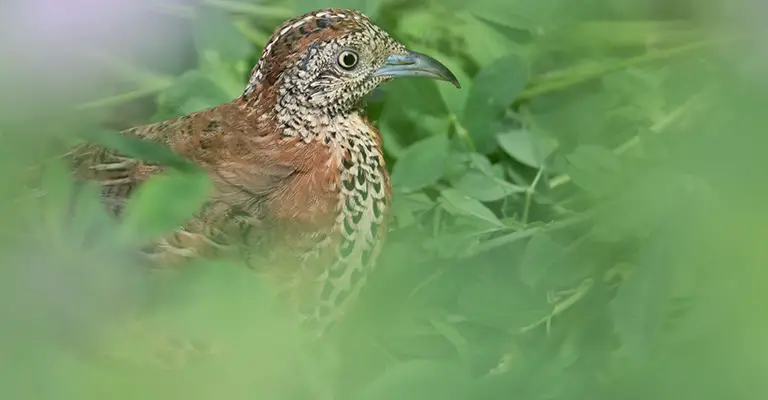
The Common Buttonquail is a small bird that looks similar to the common quail. It has sandy brown upper parts, buff underparts with black flank markings, and a plain face.
When in flight, it shows off its whitish underside wings tinged with red edges.
This type of buttonquail can be found throughout Africa, India, and parts of Southeast Asia where they prefer grasslands or marshy areas for breeding grounds.
They feed on insects such as ants and beetles which they scour along the ground while walking slowly or running short distances followed by sudden stops when needed to capture their prey quickly.
As shy birds, these creatures will either run away from threats or hide in tall vegetation; rarely do they take flight unless absolutely necessary.
Scientific classification:
| Kingdom | Animalia |
| Phylum | Chordata |
| Class | Aves |
| Order | Charadriiformes |
| Family | Turnicidae |
| Genus | Turnix |
| Species | T. sylvaticus |
42. Chinese Bamboo Partridge
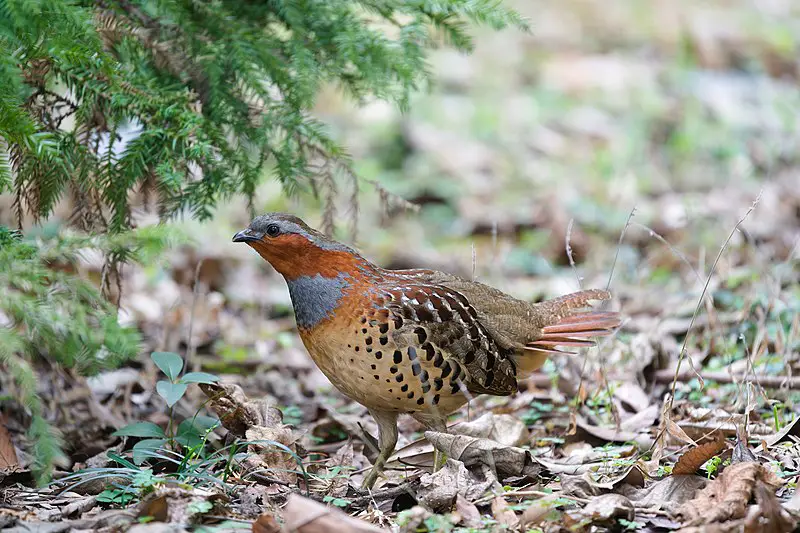
The Chinese bamboo partridge is a small, Galliform bird native to China and one of only three species in the genus Bambusicola. It has a slim body with reddish-brown plumage on its back, while the underside is white or pale yellow.
Its distinctive feature is black stripes along its wings and tail feathers. The Chinese bamboo partridge can grow up to 28 cm long and weigh between 90–100 gms.
They are omnivorous birds that feed mainly on seeds, berries, and buds as well as insects like grasshoppers and caterpillars.
During the breeding season they form monogamous pairs but spend most of their time alone when not nesting or mating.
These beautiful little birds make quite an impression during their courtship display which includes singing duets consisting of loud whistles interspersed with short chirps from both mates.
Scientific classification:
| Kingdom | Animalia |
| Phylum | Chordata |
| Class | Aves |
| Order | Galliformes |
| Family | Phasianidae |
| Genus | Bambusicola |
| Species | B. thoracicus |
43. Red Collared Dove
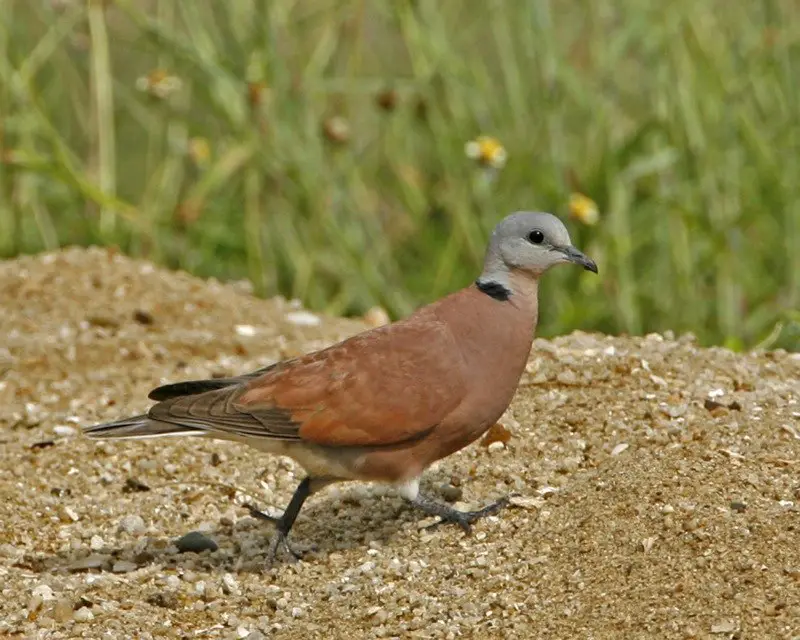
The Red Collared Dove is a small pigeon species native to the tropics of Asia. It has an unmistakable appearance, with adult males having a blue-grey head and red-brown body while females are plainer with pale brown plumage like that of its larger cousin, the Eurasian Collared Dove.
The bird was formally described in 1758 by French naturalist Johann H. This dove feeds mainly on seeds and grain but will also eat some insects for protein.
These birds tend to live near human dwellings as they often benefit from food scraps left behind or given directly to them by humans.
They make their nests inside tree cavities or sometimes build platforms made up of twigs in dense trees or bushes where they lay two white eggs at once which hatch after 15 days incubation period shared between both parents.
Scientific classification:
| Kingdom | Animalia |
| Phylum | Chordata |
| Class | Aves |
| Order | Columbiformes |
| Family | Columbidae |
| Genus | Streptopelia |
| Species | S. tranquebarica |
44. Japanese Cormorant
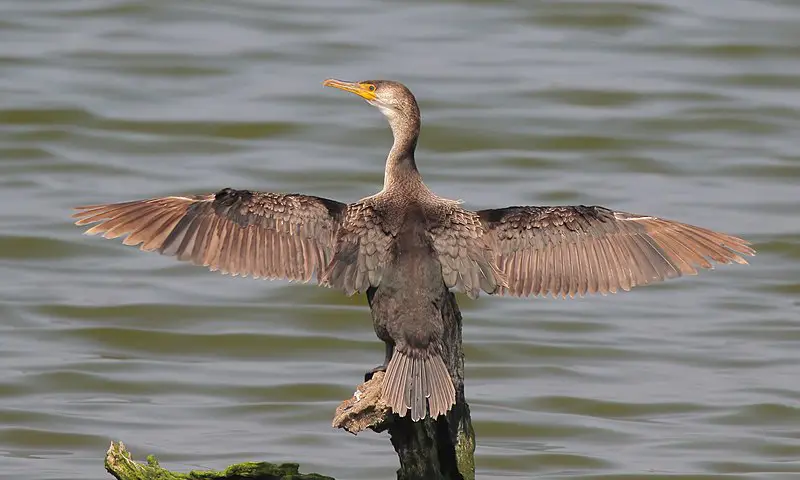
The Japanese cormorant is a black-bodied bird with a white throat and cheeks and a partially yellow bill. It can be found in the East Palearctic region, ranging from Taiwan to Russia’s Far East.
This species of cormorant has been domesticated by fishermen for centuries as part of their traditional fishing methods; fishers will tie strings around the birds’ necks so that.
They cannot swallow larger fish, allowing them to take only smaller catches back for themselves.
The domesticated birds are also trained to dive more deeply into waters than wild ones would typically do on their own – an invaluable skill when it comes to catching deep-sea prey.
As such, this long-standing tradition between humans and wildlife serves both parties well: humans get food while providing something essential back in return.
Scientific classification:
| Kingdom | Animalia |
| Phylum | Chordata |
| Class | Aves |
| Order | Suliformes |
| Family | Phalacrocoracidae |
| Genus | Phalacrocorax |
| Species | P. capillatus |
Also Featured In: Yakushima Island Birds You Should Know,
45. Chinese Egret
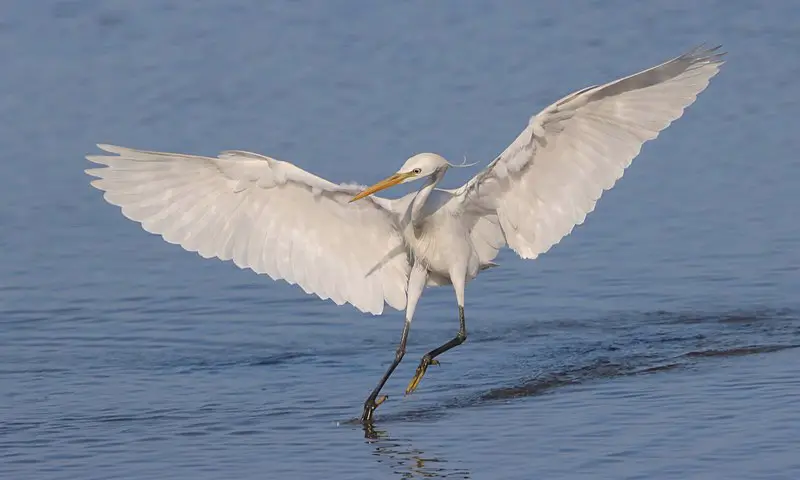
The Chinese egret is a unique species of egret found in east Asia. It was first discovered by Robert Swinhoe in 1860 and stands about 68 cm tall with an all-white plumage resembling the little egret.
During the non-breeding season, its bill has a dusky hue at the base with a tannish peach above it. These graceful birds are now classified as ‘Threatened’ due to habitat.
Destruction and hunting for their feathers which were used extensively during fashion trends of previous centuries.
Conservation efforts such as protected reserves have been implemented to help safeguard these beautiful creatures from further decline.
Scientific classification:
| Kingdom | Animalia |
| Phylum | Chordata |
| Class | Aves |
| Order | Pelecaniformes |
| Family | Ardeidae |
| Genus | Egretta |
| Species | E. eulophotes |
46. Chinese Monal
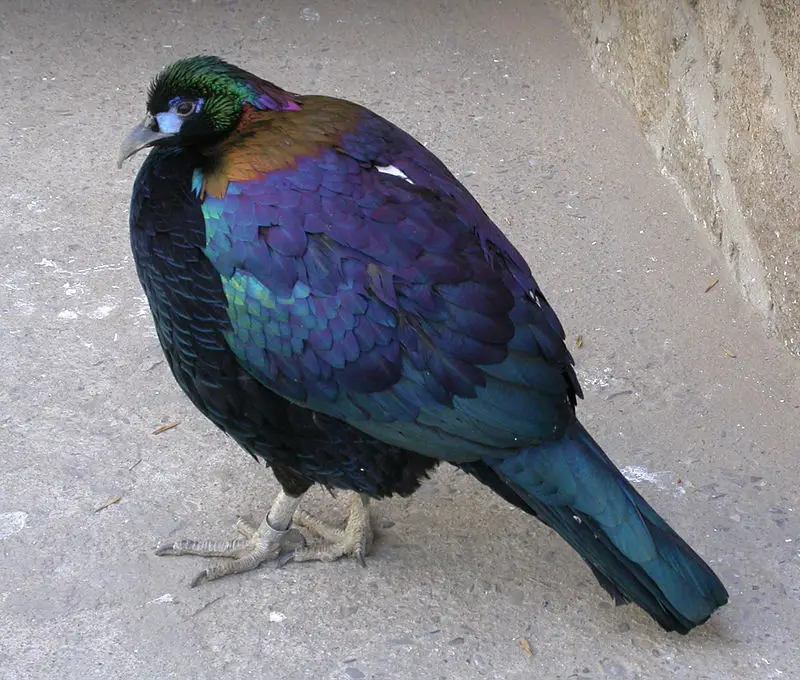
The Chinese Monal is a stunning pheasant with highly iridescent plumage. The male of the species has an imposing presence, sporting a large drooping purple crest, metallic green head, and bluish-green feathers over its reddish gold mantle and black underparts.
Its crowning glory is blue bare skin around the eyes that add to this bird’s grandeur. Females are dark brown in coloration with white on their throats.
It’s also noteworthy as it’s the largest monal species in its range – restricted only to central China mountain ranges.
This remarkable creature certainly stands out among other birds due to its beauty; no wonder they have been revered by humans since ancient times.
Scientific classification:
| Kingdom | Animalia |
| Phylum | Chordata |
| Class | Aves |
| Order | Galliformes |
| Family | Phasianidae |
| Genus | Lophophorus |
| Species | L. lhuysii |
47. Hair-Crested Drongo
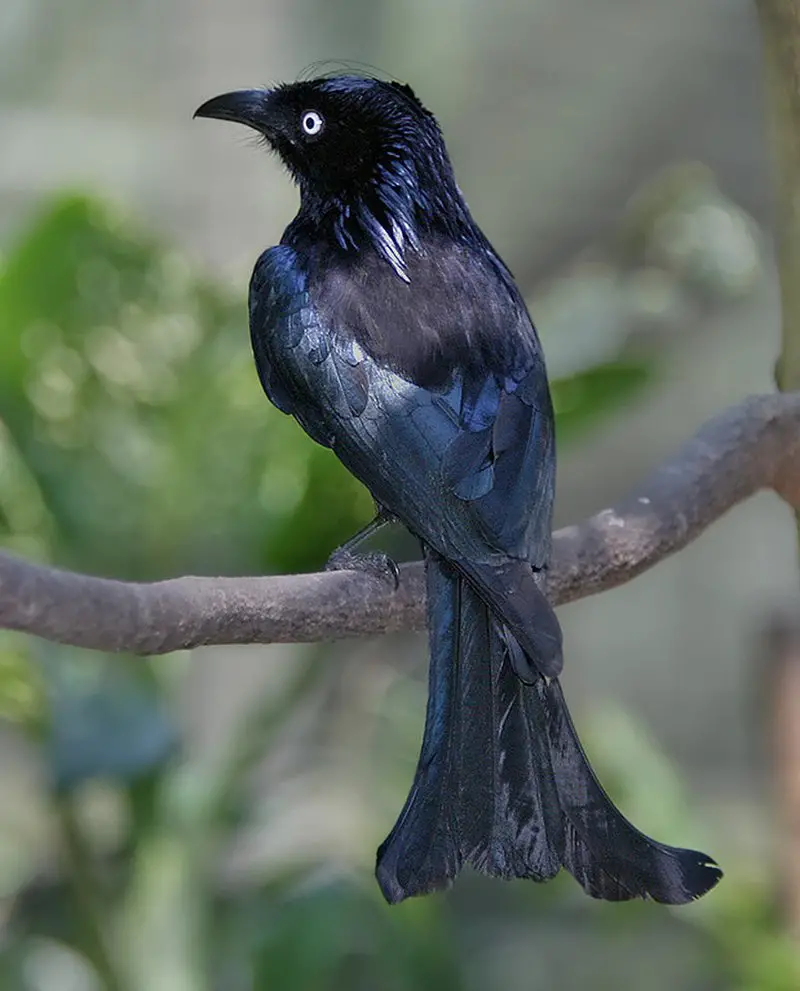
The Hair-crested Drongo is a striking bird native to Bangladesh, India, and Bhutan. It belongs to the family Dicruridae and has distinctive black feathers with white tips that form an eye-catching crest on its head.
Its other features include long forked tail feathers, yellow eyes, and a grey bill. Generally found in open forests or scrublands as well as agricultural lands near human settlements.
This species can often be seen perched atop tall trees where it surveys its surroundings for insects that make up most of its diet.
Though not considered globally threatened yet due to its large range size, deforestation could threaten their populations in certain areas making conservation efforts important in order to ensure they remain abundant across Asia.
Scientific classification:
| Kingdom | Animalia |
| Phylum | Chordata |
| Class | Aves |
| Order | Passeriformes |
| Family | Dicruridae |
| Genus | Dicrurus |
| Species | D. hottentottus |
48. Xinjiang Ground Jay
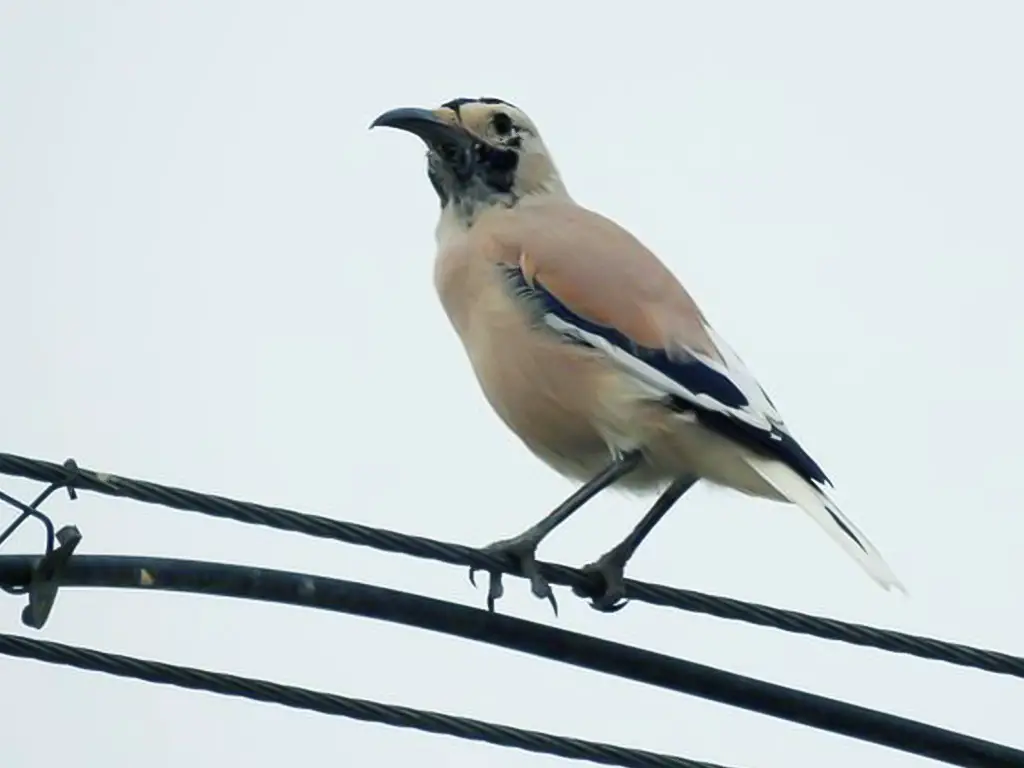
Xinjiang ground jay is a species of bird in the Corvidae family, endemic to China. It has a brownish-white coat and is not larger than an adult human’s hand.
Unfortunately, its conservation status has been listed as “Near Threatened” since 2004 due to habitat fragmentation and degradation which threaten this beautiful creature.
As such, it is important for us to take action toward protecting this species so that future generations have the opportunity to experience these birds in their natural habitats.
Scientific classification:
| Kingdom | Animalia |
| Phylum | Chordata |
| Class | Aves |
| Order | Passeriformes |
| Family | Corvidae |
| Genus | Podoces |
| Species | P. biddulphi |
49. Green Peafowl
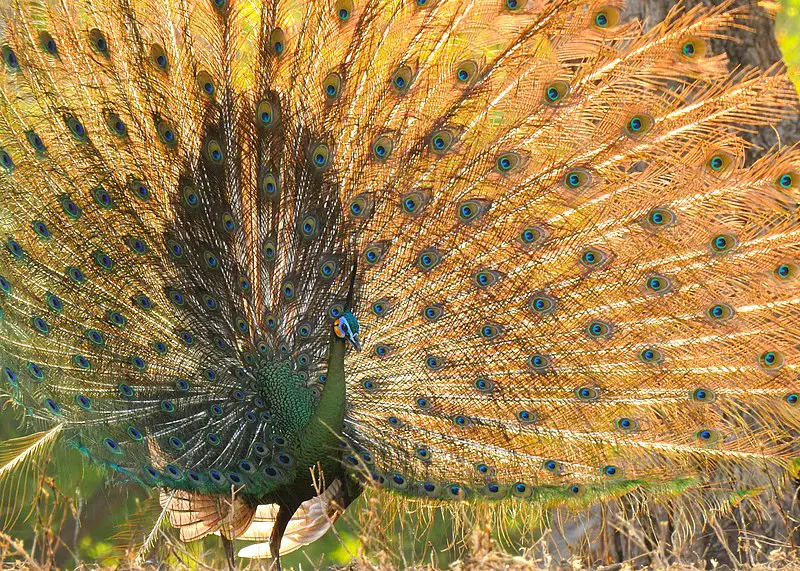
The Green Peafowl is a beautiful bird native to Southeast Asia and Indochina. It has bright green plumage with blue-green neck feathers, which have earned it the name “Indonesian peacock”.
This stunning species of peafowl is Myanmar’s national bird and was once abundant throughout its range. Unfortunately, its population has declined drastically in recent years due to habitat loss and hunting for food.
The few remaining populations are mainly found in Cambodia (mainly northern and eastern provinces) as well as parts of Vietnam.
Due to this drastic decline, the IUCN Red List now classifies the Green Peafowl as endangered. Conservation efforts must be taken soon if we want to save this majestic species from extinction.
Scientific classification:
| Kingdom | Animalia |
| Phylum | Chordata |
| Class | Aves |
| Order | Galliformes |
| Family | Phasianidae |
| Genus | Pavo |
| Species | P. muticus |
Also Featured In: Java Birds You Should Know,
50. Golden Eagle
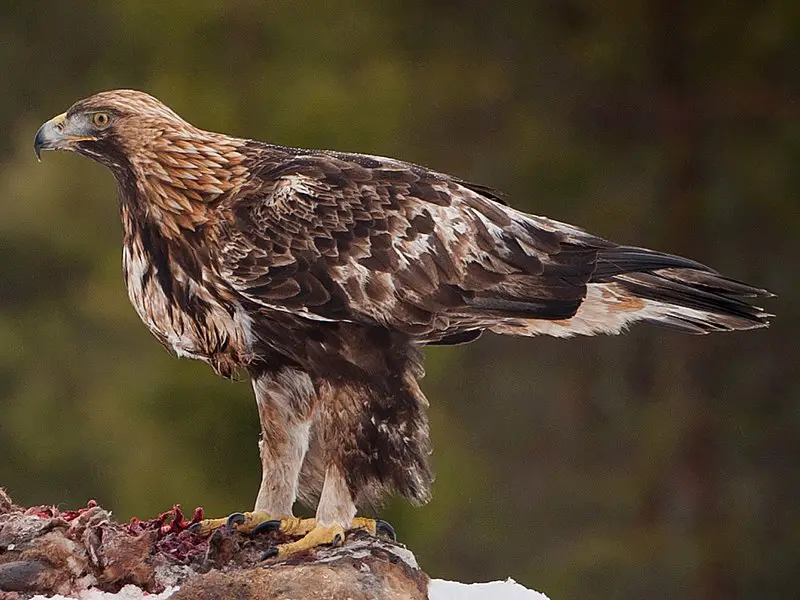
The Golden Eagle is an iconic bird of prey found throughout the northern hemisphere. It is a large, powerful raptor with dark brown feathers and lighter golden-brown plumage on its nape.
Immature eagles have white patches around their beaks, tails and wings which they lose as they mature.
Its diet consists mostly of small mammals such as rabbits, hares and marmots but can also include birds or reptiles depending on where it lives.
These majestic creatures are known for their remarkable strength in flight; using thermal updrafts to soar high into the sky searching for food or simply enjoying the view below them.
They are often seen soaring alone over open expanses looking out for potential threats from other predators like wolves or foxes that may encroach upon their territory.
Scientific classification:
| Kingdom | Animalia |
| Phylum | Chordata |
| Class | Aves |
| Order | Accipitriformes |
| Family | Accipitridae |
| Genus | Aquila |
| Species | A. chrysaetos |
Also Featured In: Birds That Live in Colorado, Birds that Live in the Deserts